Years Of Creation
ALL
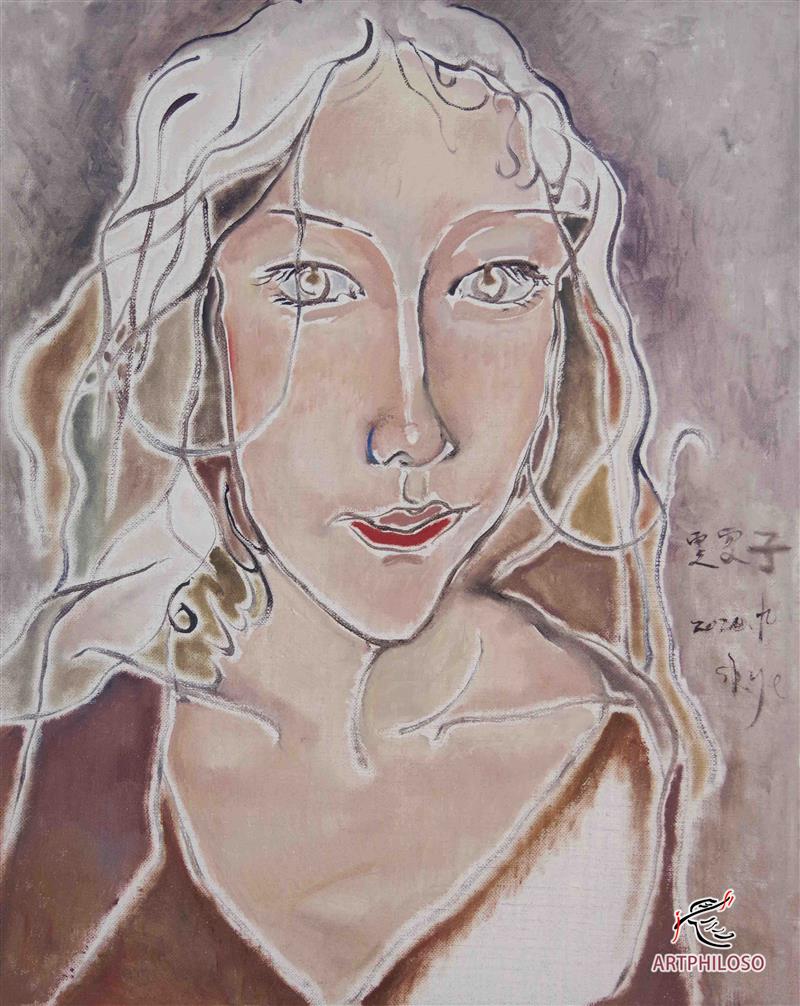
It is the only painting that I only treasure.
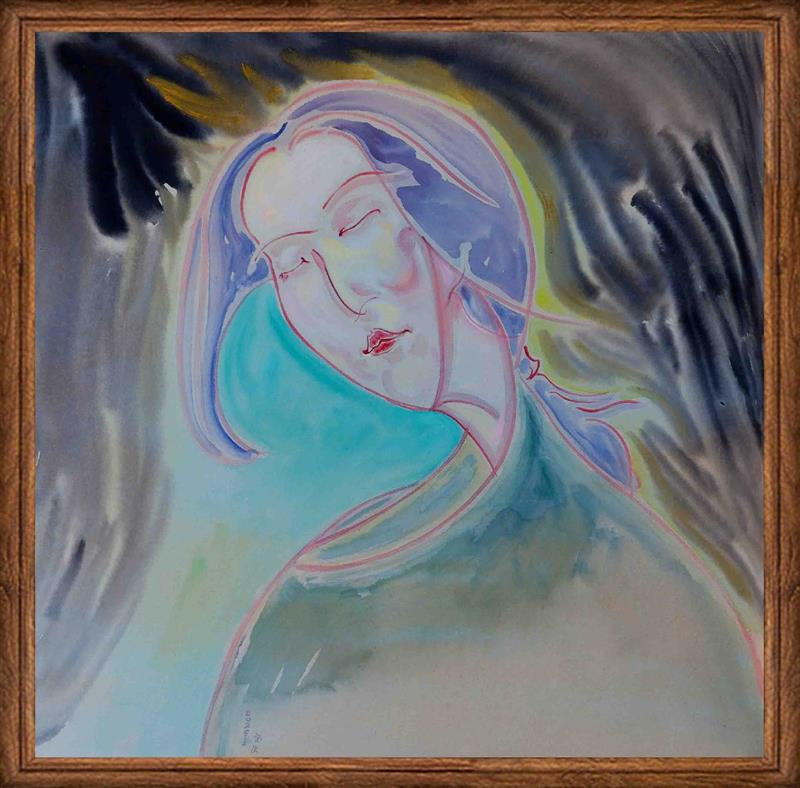
This is an acrylic figure portrait in the style of ink painting. The painting outlines the figure's form with agile and expressive lines. Despite the simple outline, the twists, turns, and variations in the thickness and lightness of the lines endow the shape with a unique rhythm.
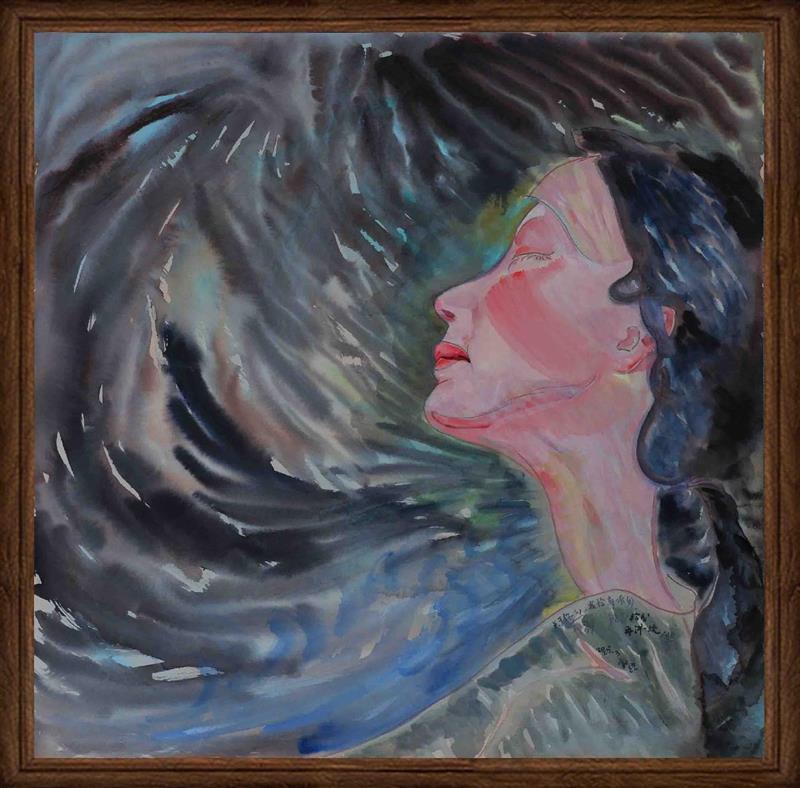
The painting centers on the profile of a woman. Her closed - eye gesture is like a private spiritual monologue, conveying a sense of tranquility, introspection, and even a touch of dreaminess.

The focus is on a woman with her eyes closed, who seems to be immersed in her own spiritual world, becoming a bearer of emotions and thoughts.
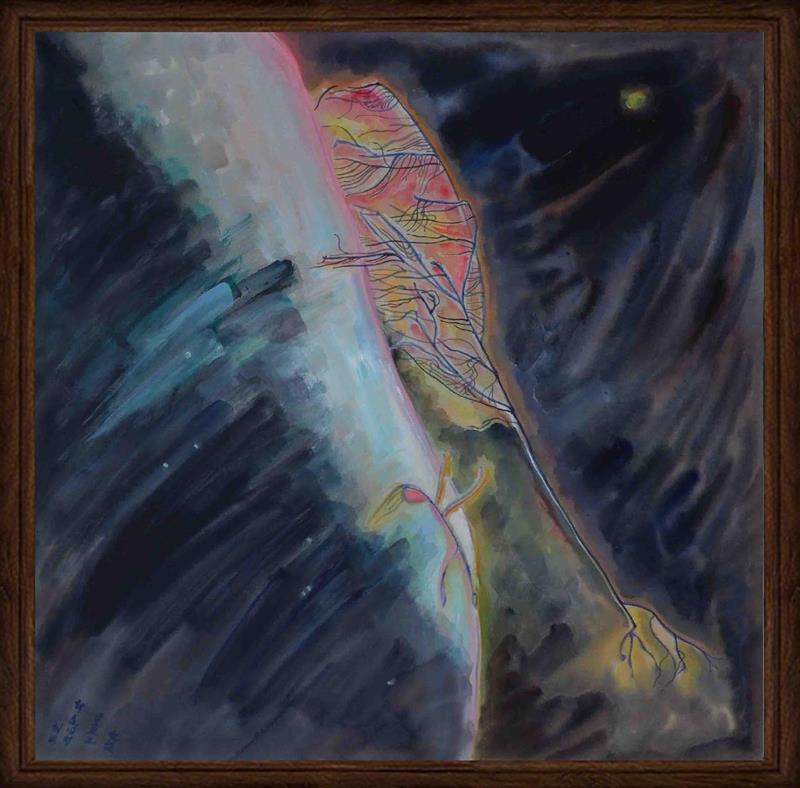
This acrylic painting constructs a unique spiritual field through a fantastical and profound visual language. In the painting dominated by dark tones, the large - area pink - blue gradient on the left acts as a mysterious light band, shattering the gloom, as if the boundary between reality and surrealism.
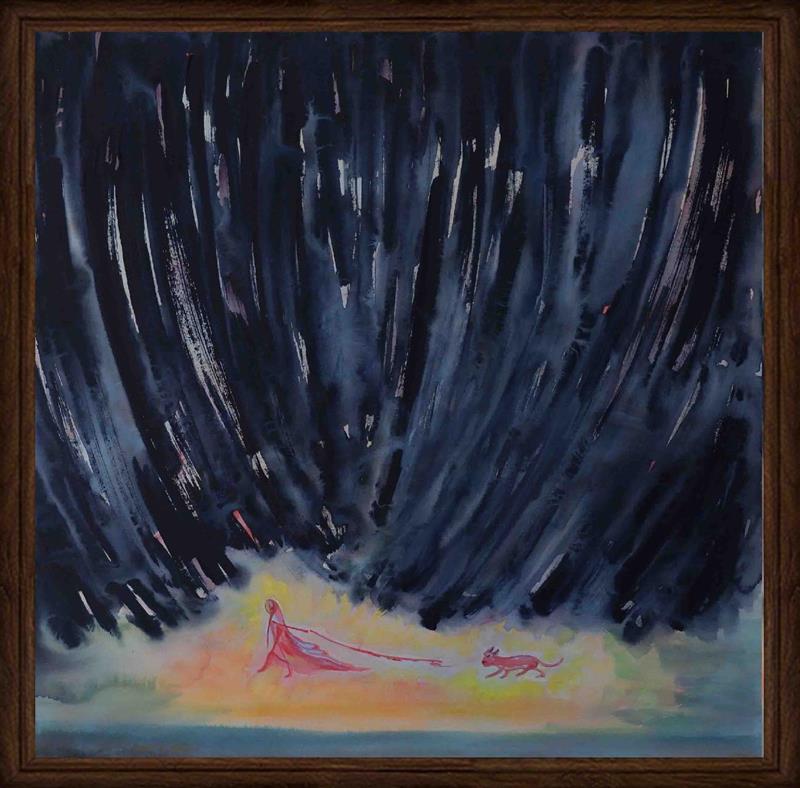
This acrylic painting constructs a highly evocative spiritual scene. The large expanse of dark brushstrokes at the top resembles a surging tide of the spirit.
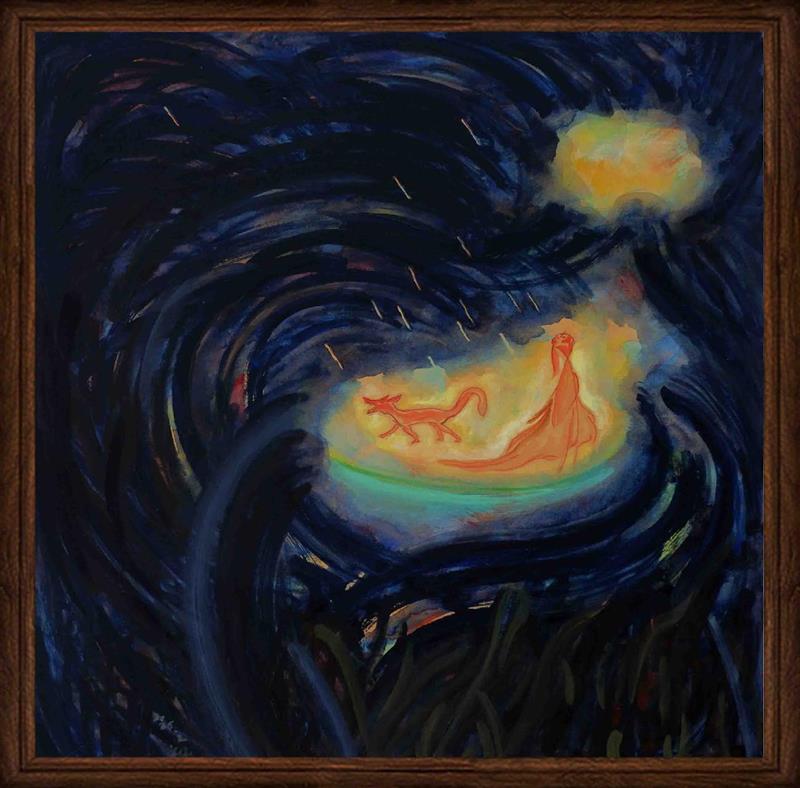
The picture takes rich dark blue as the main tone, and the whirlpool - like brushstrokes build a vast and mysterious space, like the starry river of the universe or a deep dream, capturing the viewer's sight. The warm - toned halo area in the center is the spiritual focal point.

In the lower part of the picture, the intertwined and twisted dark branches and lines are like the shackles of reality and the chaotic jungle of the spirit.

In the artwork, the dark, vertically - elongated forms resemble giant tree trunks or unknown passages.
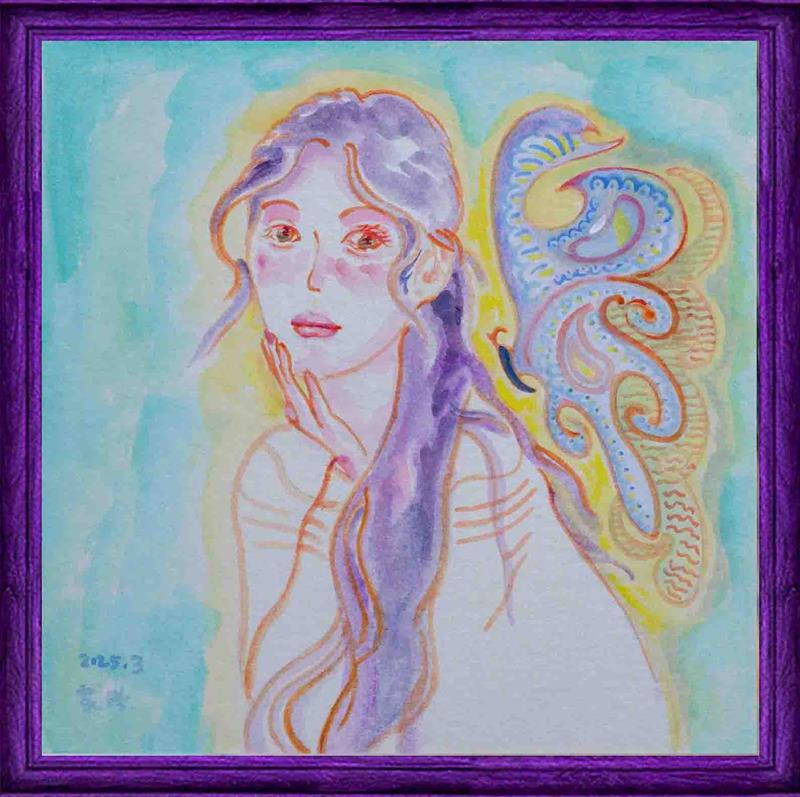
The woman in the picture has long hair presented in a soft purple hue. The hair flows naturally, as if gently fluttering in the breeze.
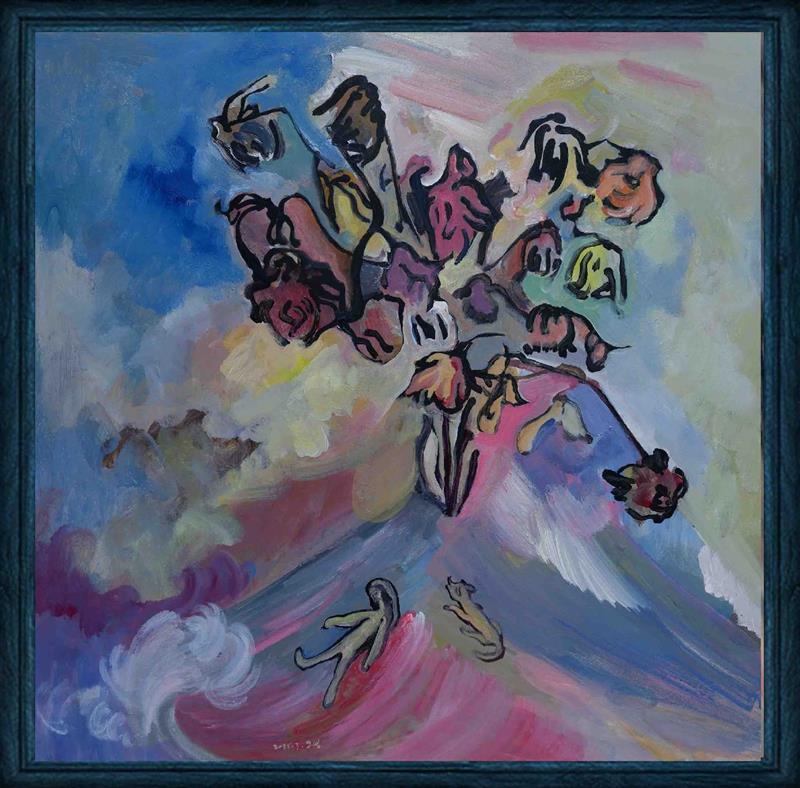
The main subject of the picture is a bunch of flowers. The forms of the flowers are exaggerated and distorted, with thick black lines outlining their contours.
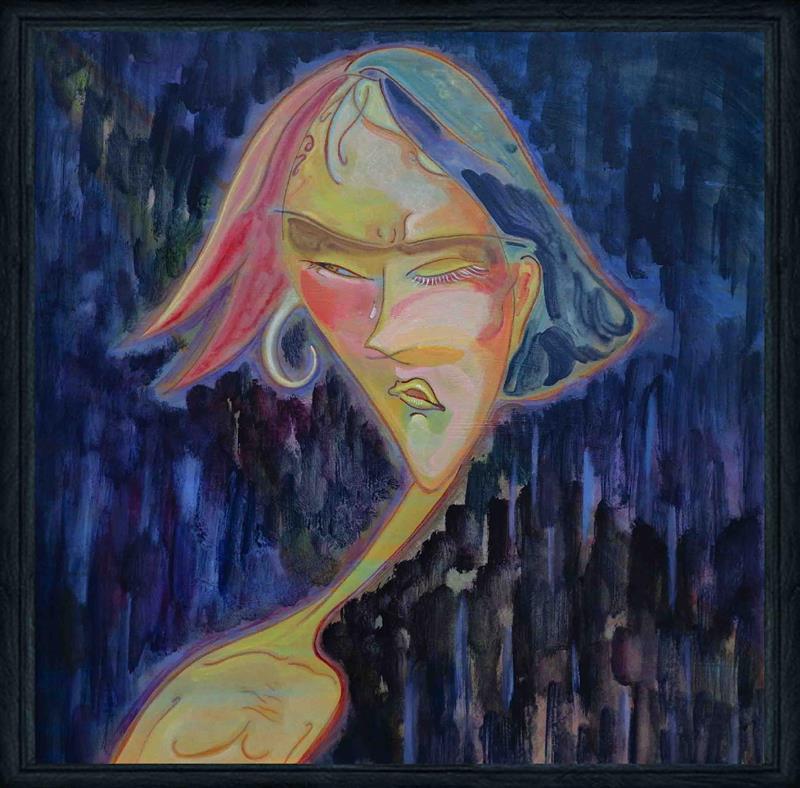
This painting uses a unique artistic language to outline a portrait full of emotional tension. The features and contours of the figure in the painting are distorted, and the color collisions are bold and impactful.
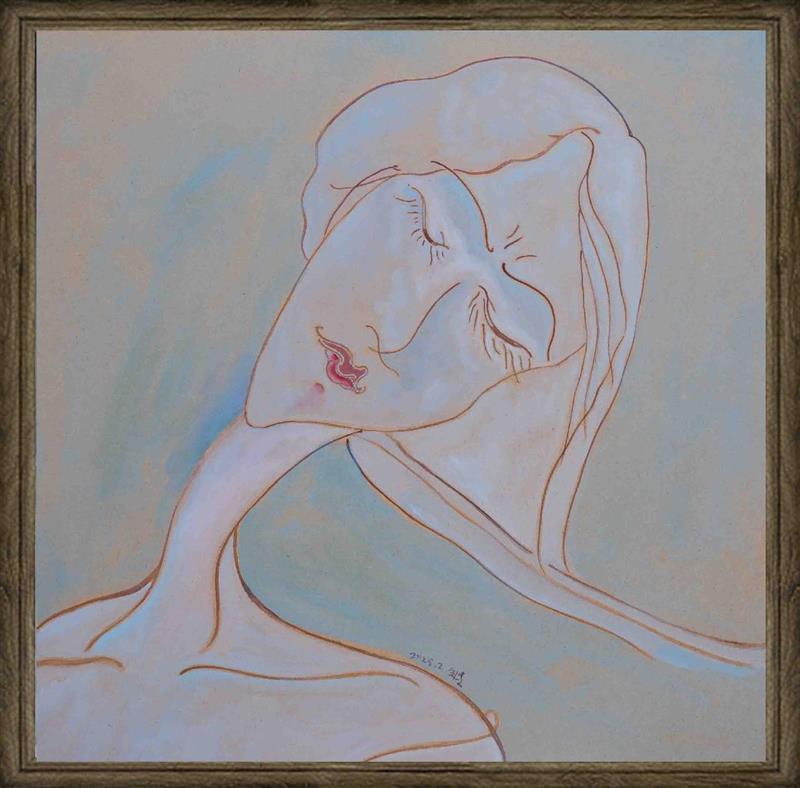
The oil painting shows that the woman in the picture undergoes surreal distortion in her facial features and contours, breaking free from the constraints of conventional human proportions and presenting a unique abstract aesthetics.

The pink vessel, as the main subject of the painting, showcases the unique aesthetic feeling of form composition through plane division and color gradation.

The figure in the painting presents a surreal visual effect through line deconstruction and color blending. The long hair is rendered with gradient colors such as pink and purple, like a flowing ribbon of emotions, twining around the head contour, demonstrating the richness of color layers.
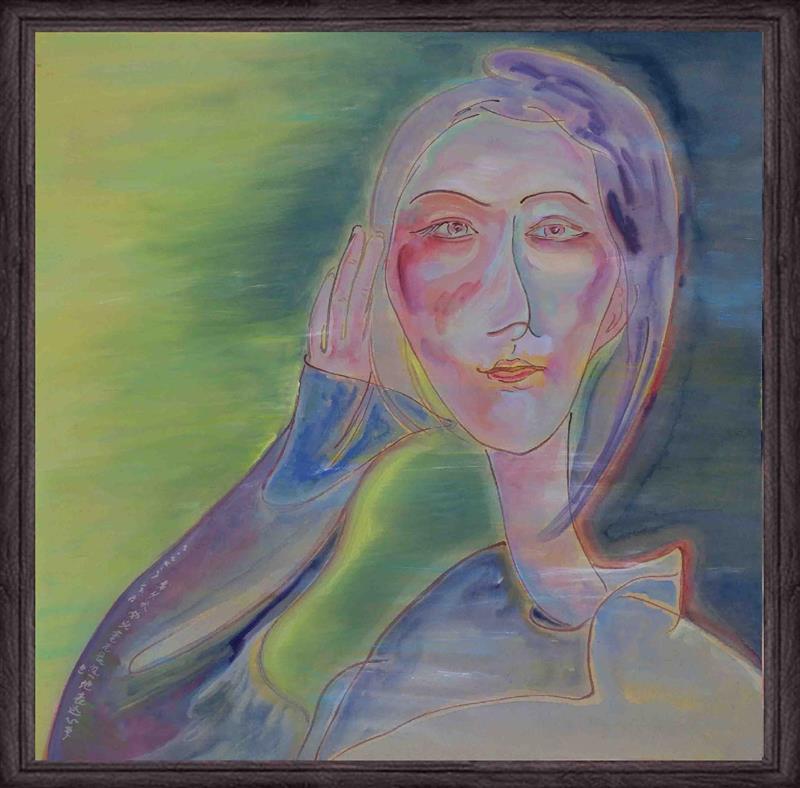
The outline of the woman in the painting is presented through smooth outlining. By using gradient color blocks, it blends colors such as blue, purple, and pink, creating a hazy beauty of color blending, as if a layer of dreamy tulle is draped over the figure.
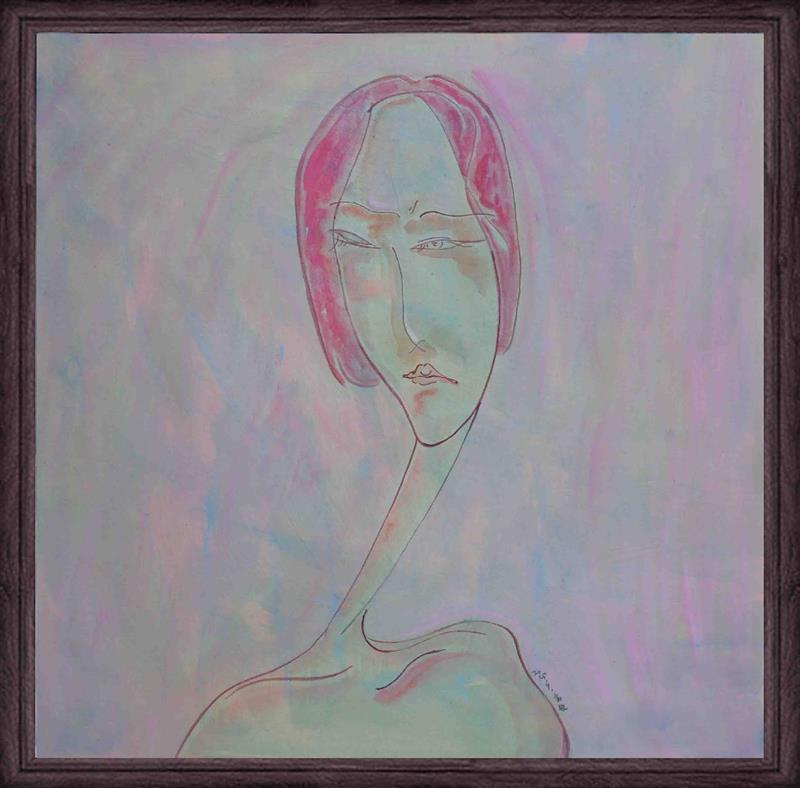
The figure in the painting has its outline precisely drawn with smooth lines, presenting the form of a slender neck and a simplified shoulder, demonstrating the artistic charm of shape refinement.
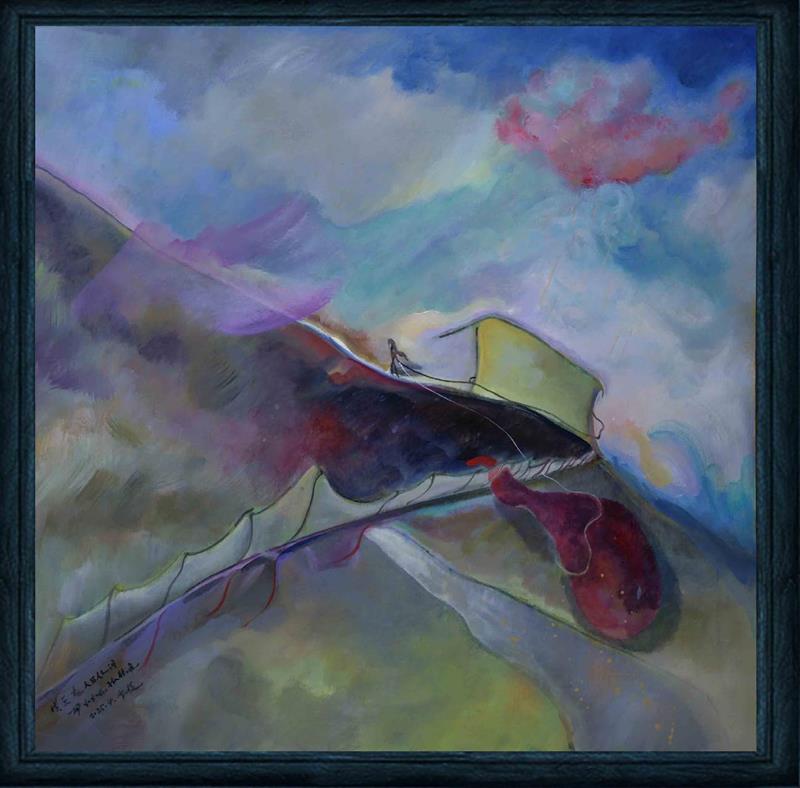
In the picture, the mountains and sky are presented through color layering. The blending of colors such as blue, purple, and green creates a hazy yet powerful atmospheric rendering, as if leading viewers into a dream - like alternate dimension.
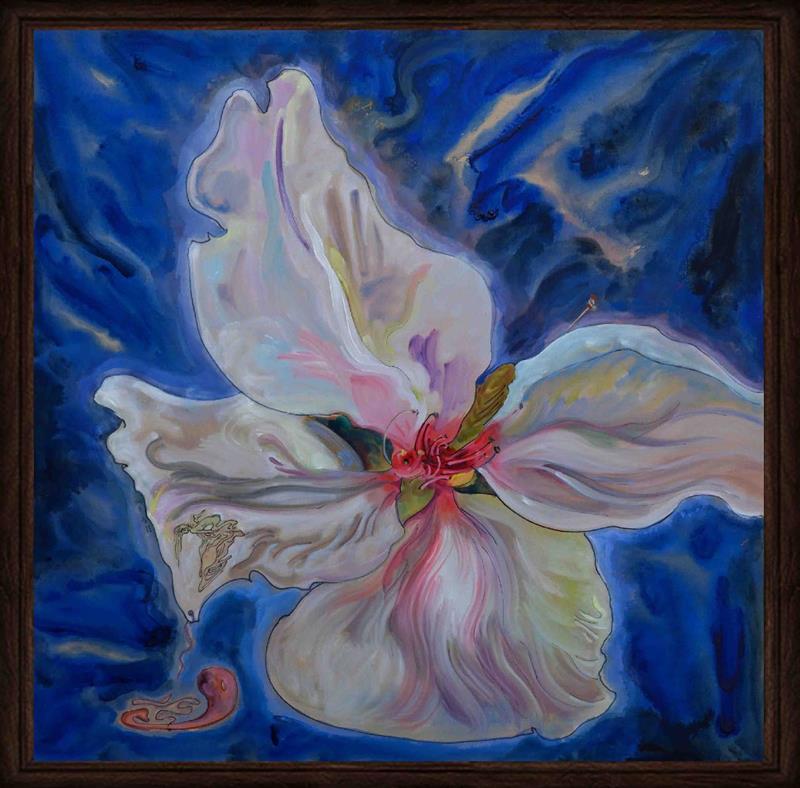
The petals of the flower in the picture are rendered with gradient colors, showing the layers of blending colors such as white, pink, and purple.
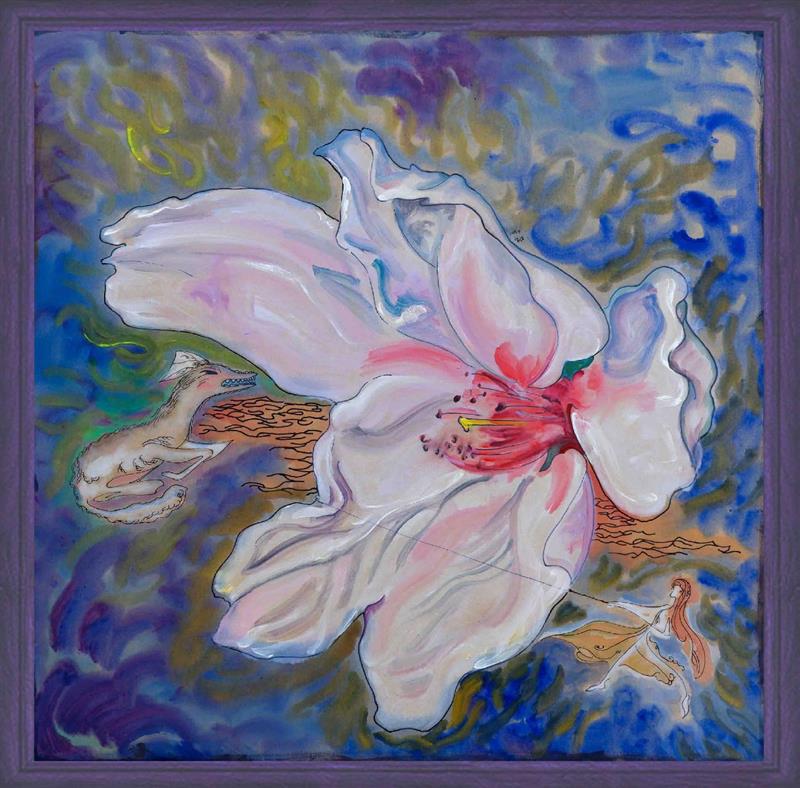
The petals are created using the blending technique, softly presenting a gradient of pink and white. Delicate brushstrokes outline the texture of the petals, demonstrating the subtlety of form - shaping.
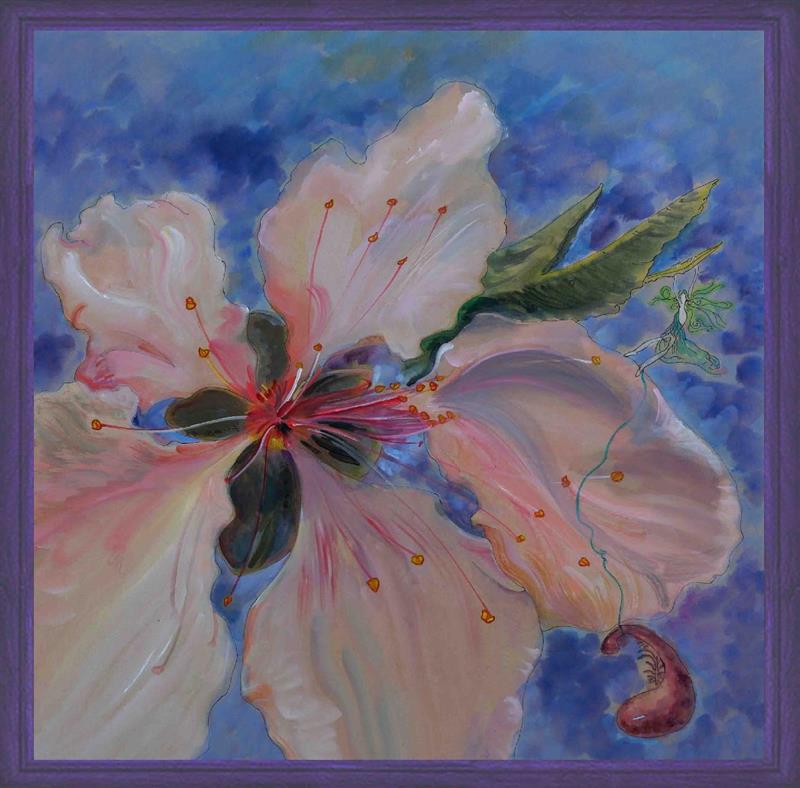
It turns loneliness into a poetic footnote — even among blooming flowers, a soul still seeks resonance.
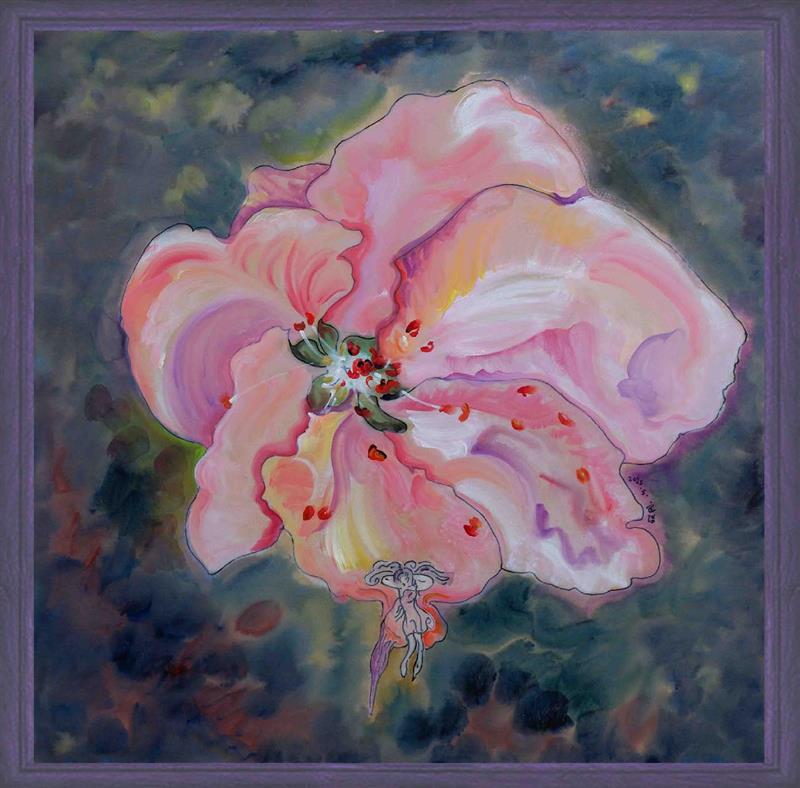
The contrast between its smallness and the flower’s bigness is just like an individual being quietly enveloped by loneliness amidst the bustling spring flowers — even in the midst of beauty, the soul may still seek a quiet corner in the noise.
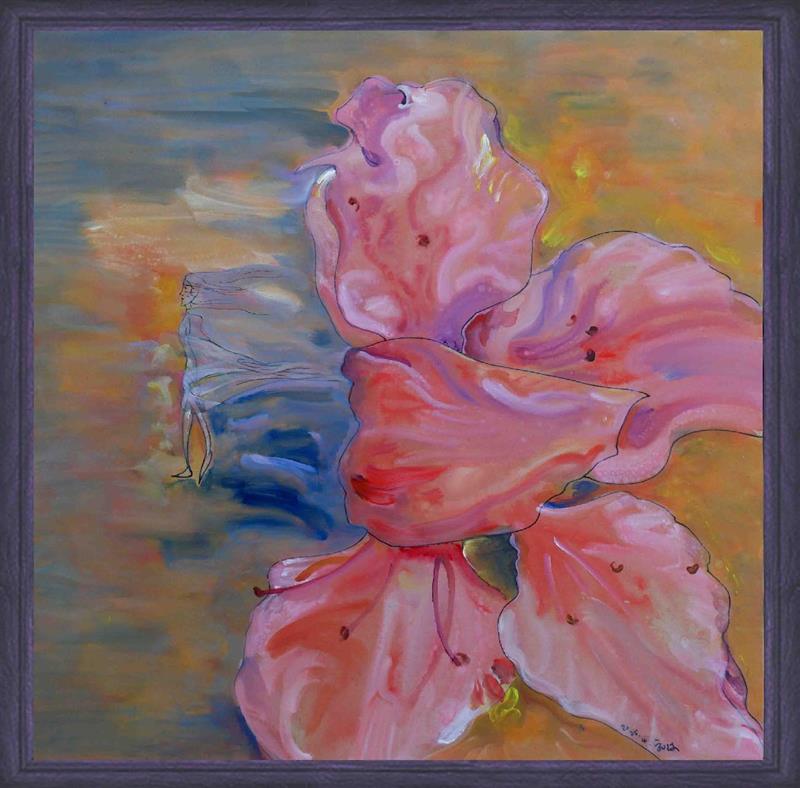
This design endows “autism” with a romantic interpretation, turning loneliness into a unique posture for the soul to communicate with the world.
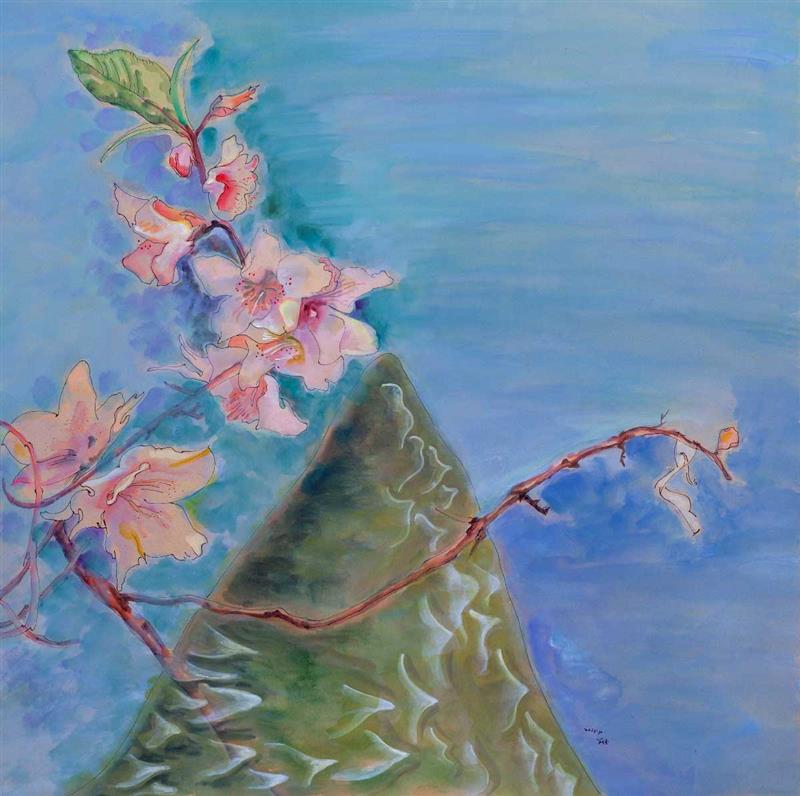
Its existence breaks the lightness of the flower branches and the haziness of the background, forming a form contrast. It seems to build a lonely barrier amidst the noisy vitality of spring.
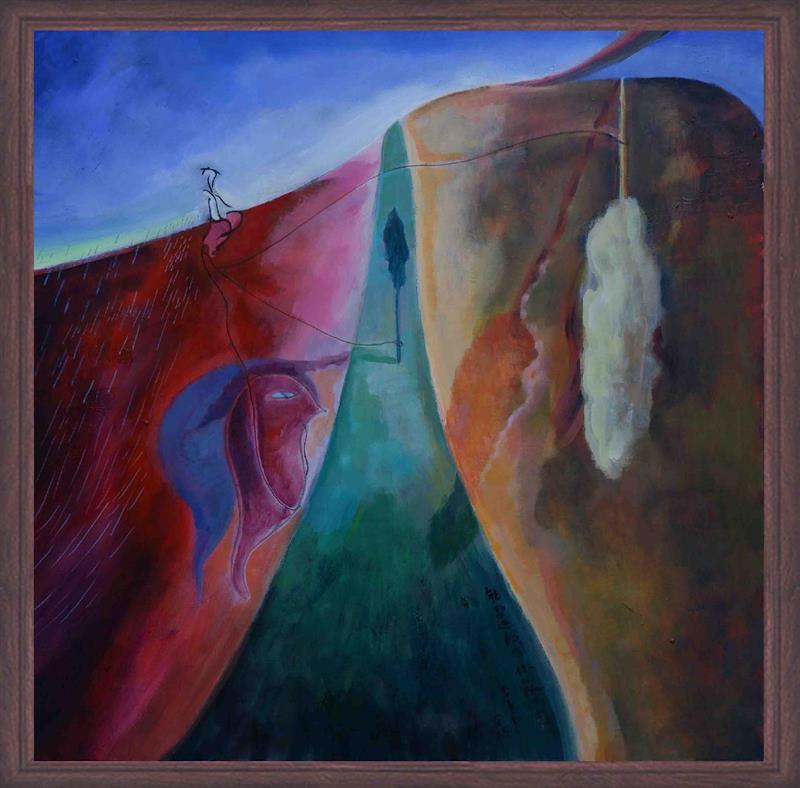
In the picture, colors serve as carriers of emotions. The collision of red and blue, purple and green, through color juxtaposition, creates a strong visual tension, as if telling the complex emotional conflicts within.
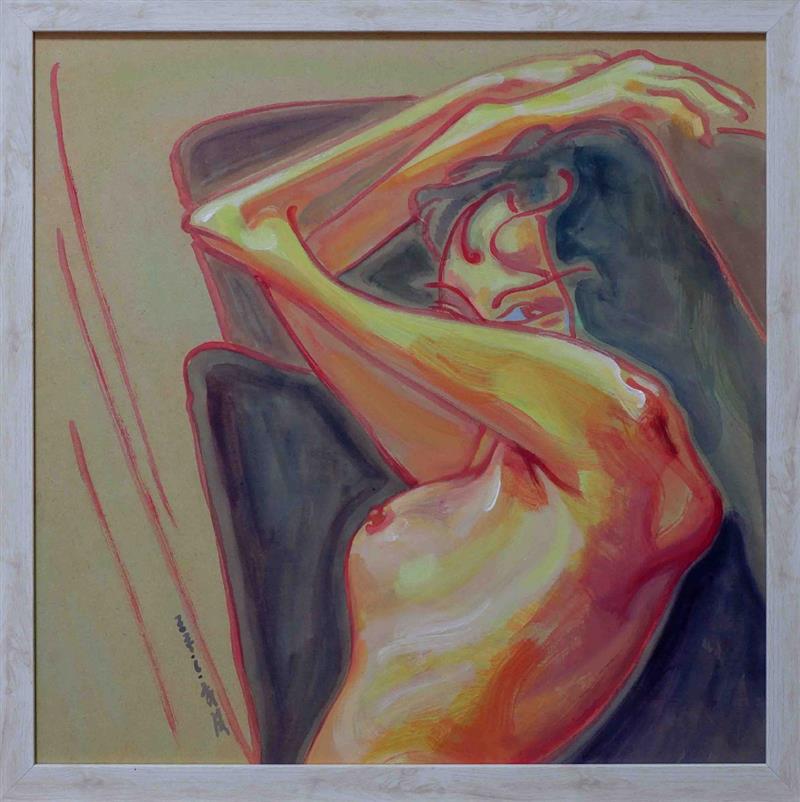
End of the Scorching Sun employs highly expressive artistic language, breaking free from realistic constraints to lay bare the soul's soliloquy through the collision of colour and line.
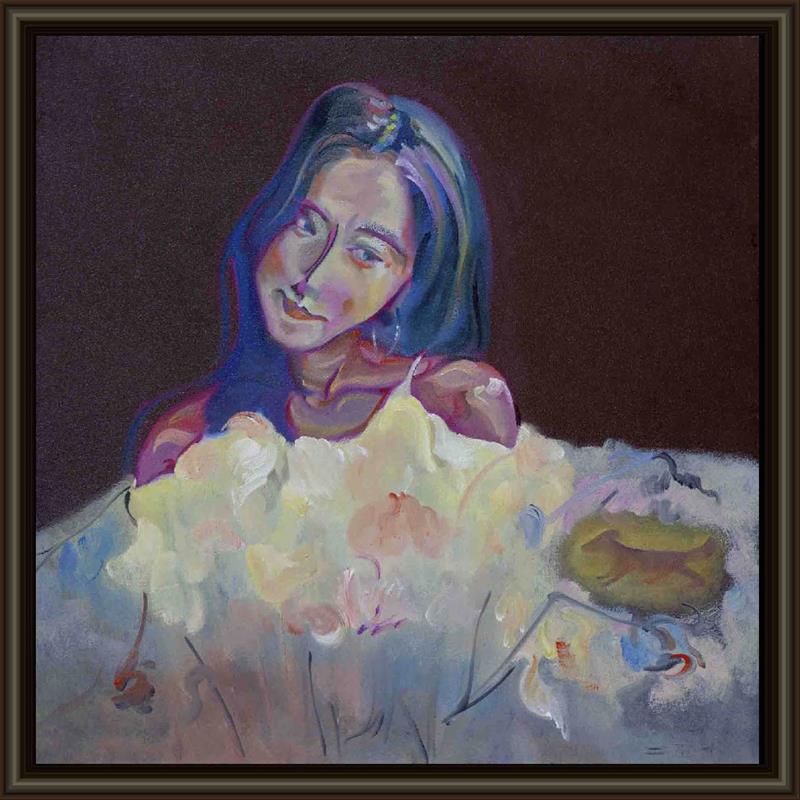
The blue-to-purple gradient in the hair and the color washes on the shoulders transform the human form into a vessel for emotion.
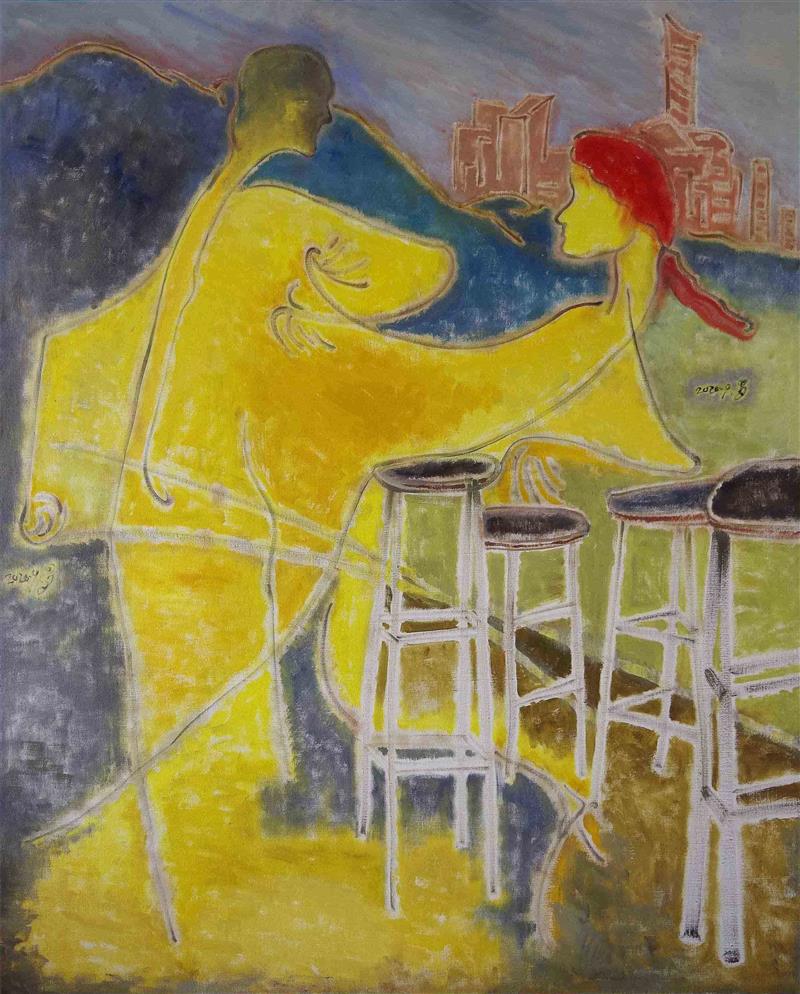
It's a pity.
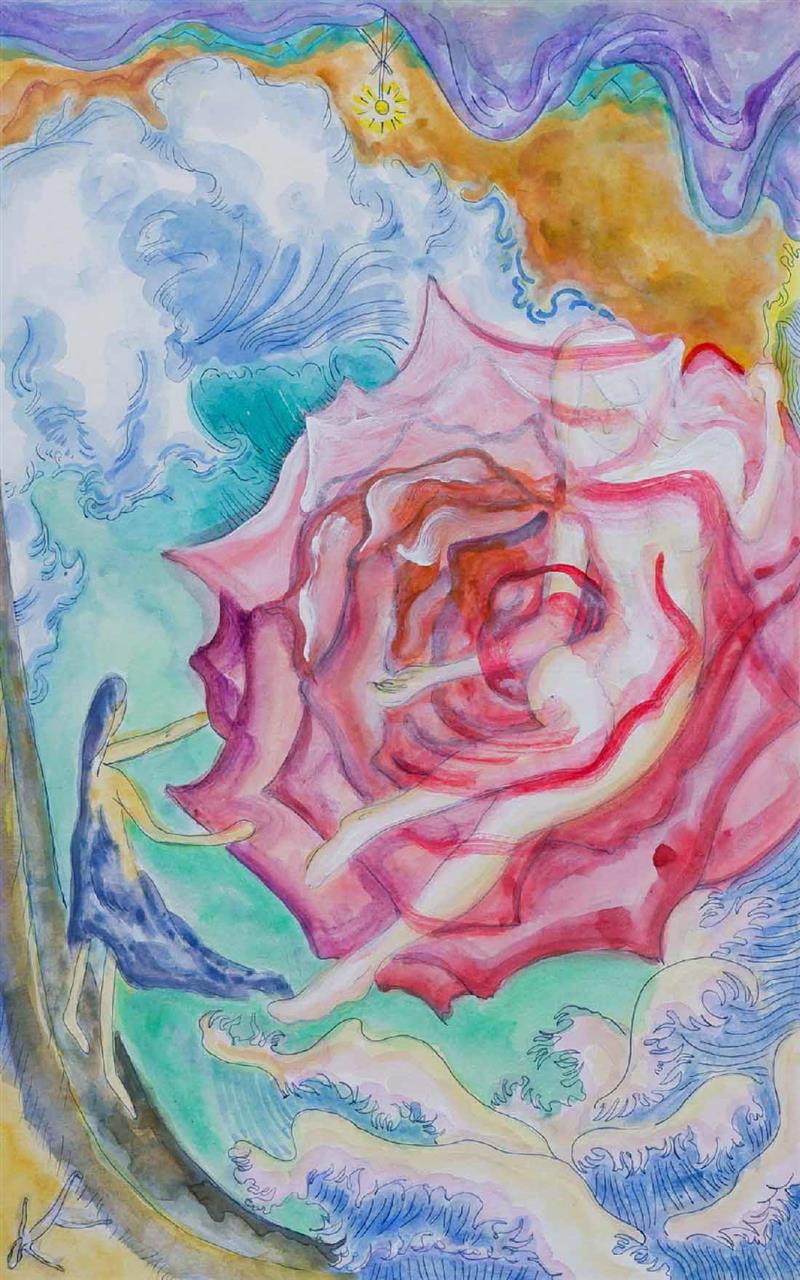
Through transparent overpainting, it becomes a symbol of the symbiosis between nature and the soul, interpreting the integration of life and beauty.
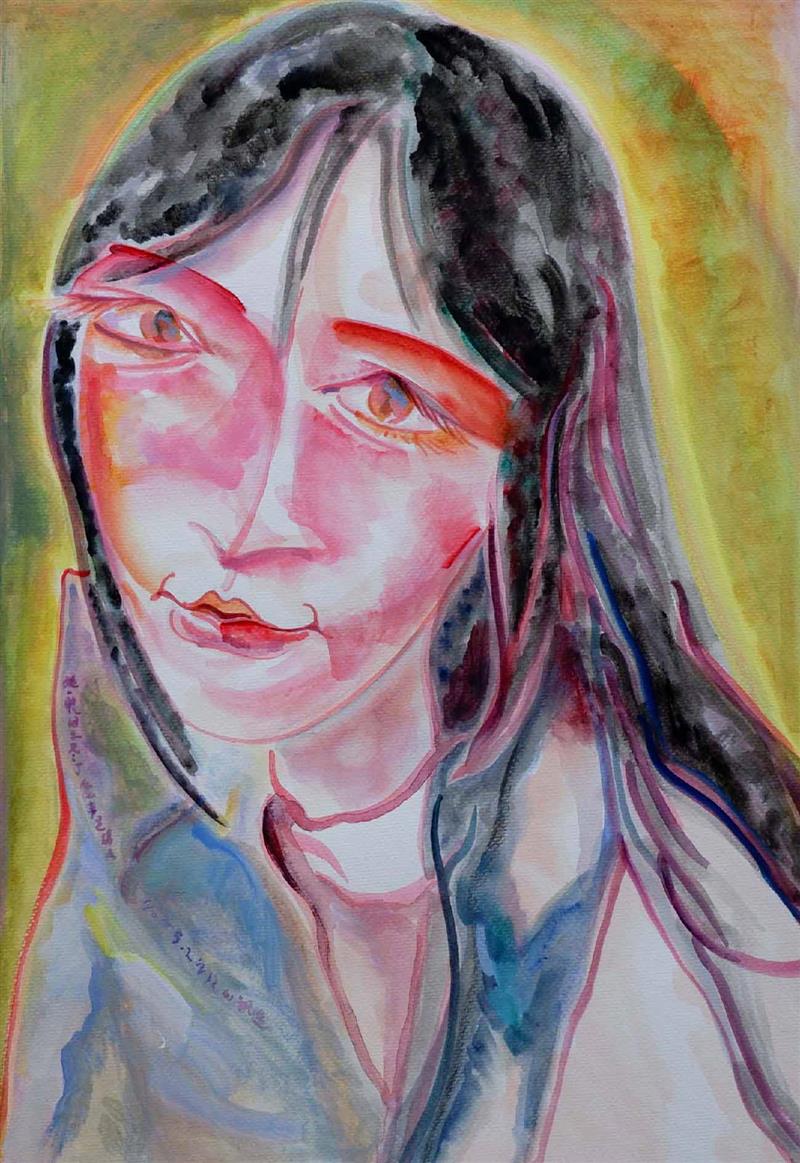
completing a deep decoding of the “fluttering” theme in the dialogue between colors and lines.
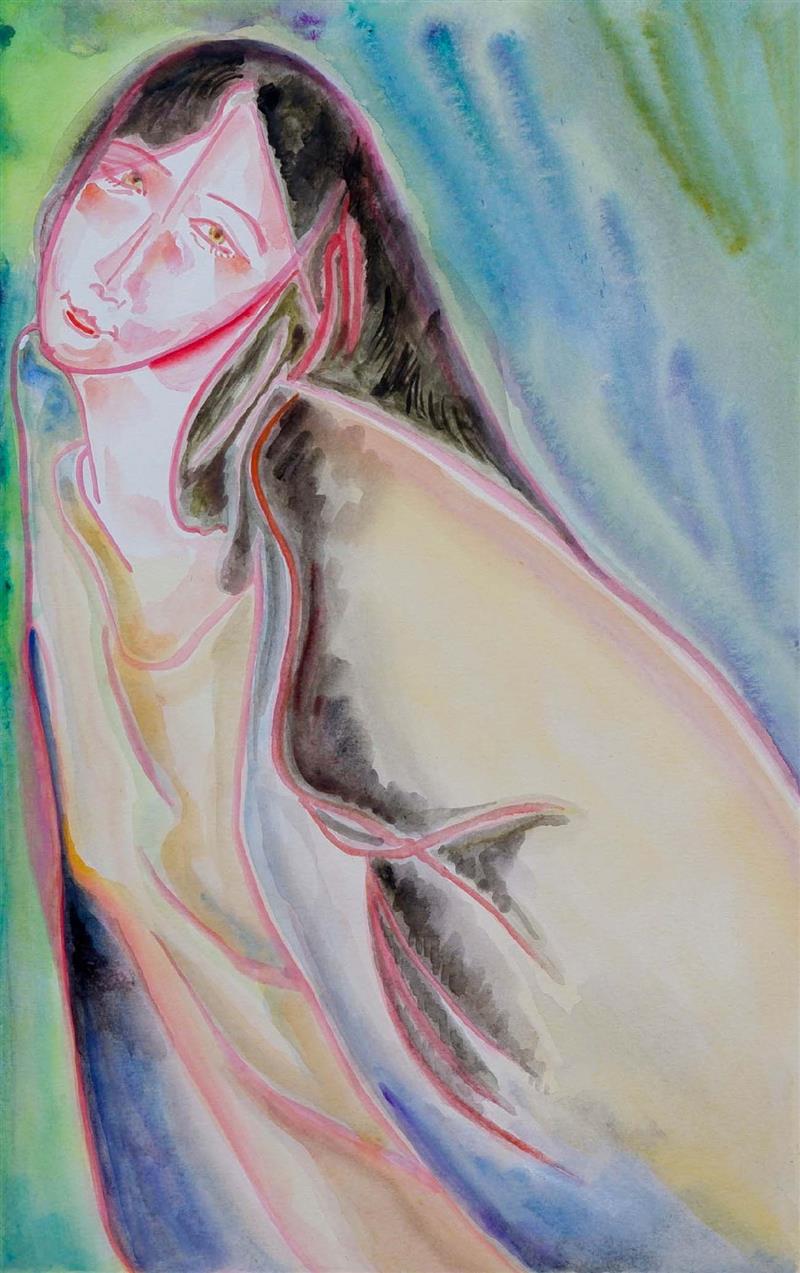
The ink - colored rendering of the long hair, using the wet - on - wet technique, creates a dense and lingering heaviness, like accumulated thoughts, becoming a dual anchor for both vision and emotion.
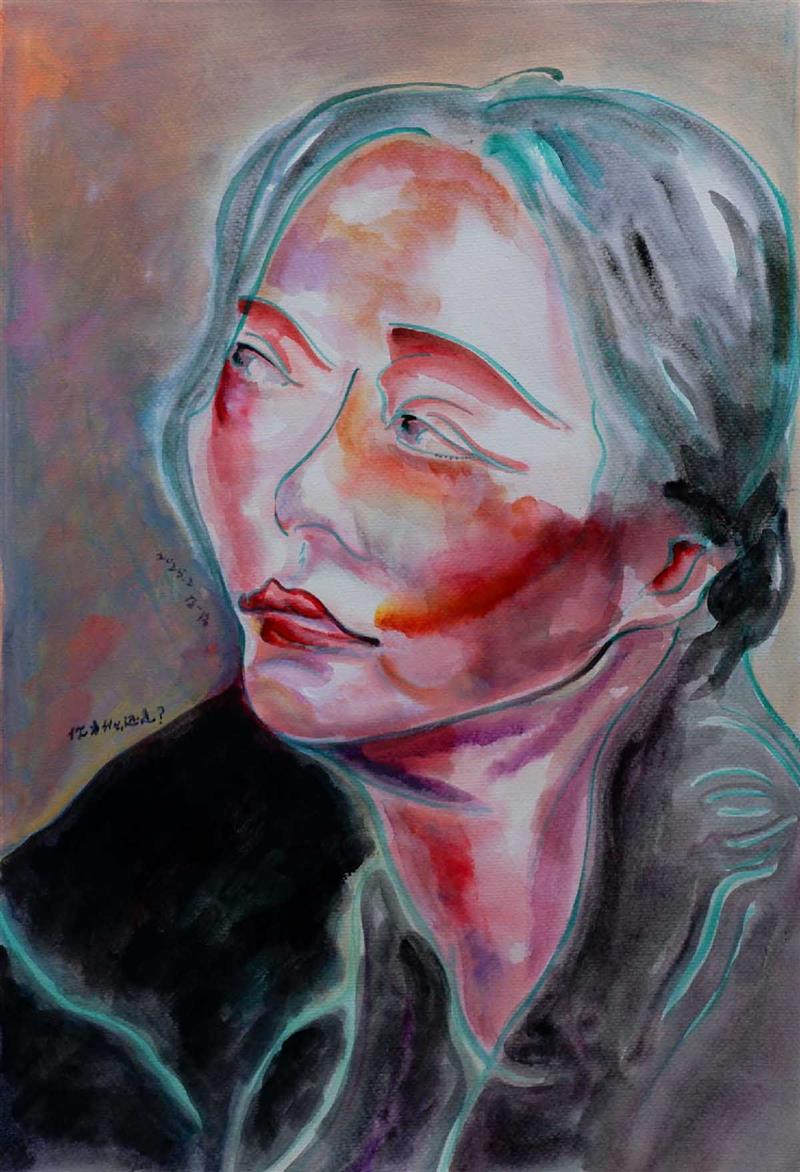
In the interweaving of colors and lines, the figure’s expression reveals the fluttering of the soul.
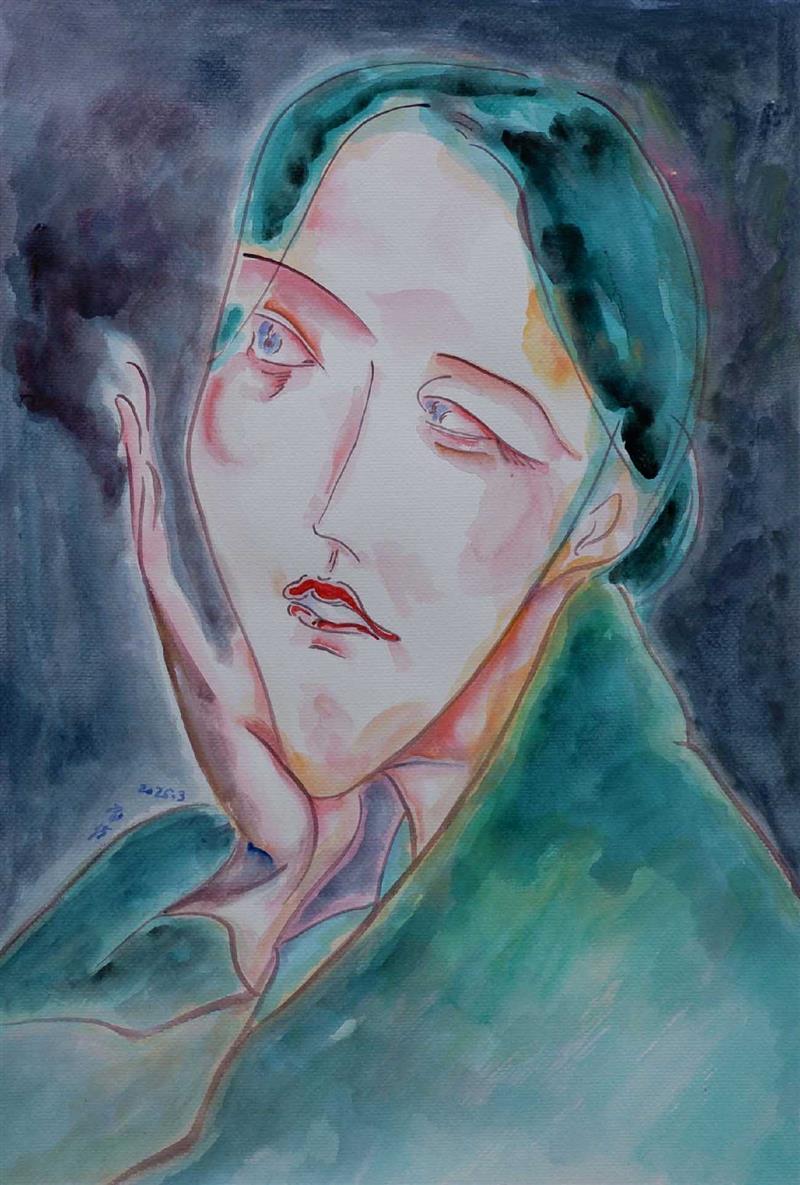
The posture of the figure resting the cheek on the hand, through moderate deformation processing, intensifies the emotions of contemplation and loneliness, becoming a concrete symbol of emotional expression.
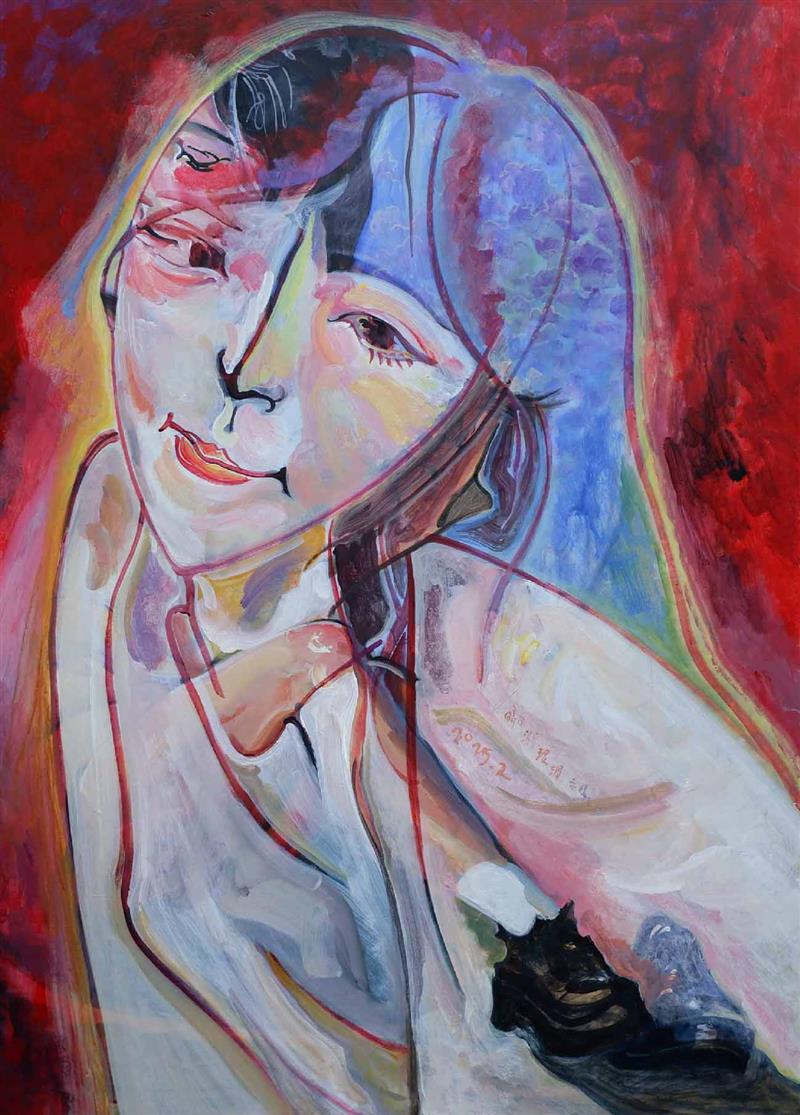
Using a Cubism - like decomposition and reorganization, it showcases the multi - faceted nature of the soul.
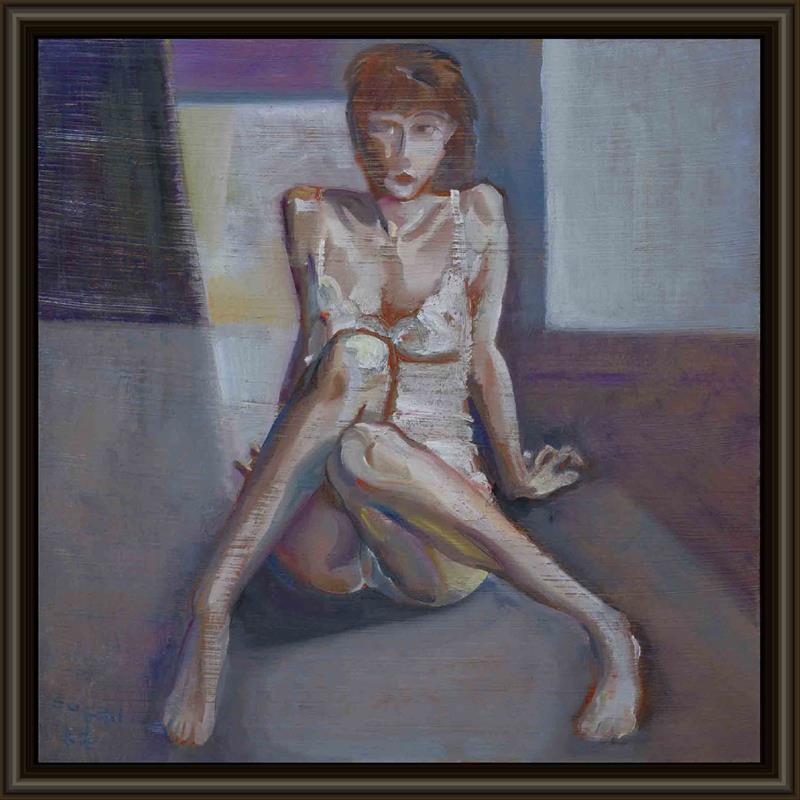
The seated stillness, downward tilt of the head, and slightly ambiguous gaze suggest bewilderment, fatigue, and withdrawal—the moment after intensity subsides.
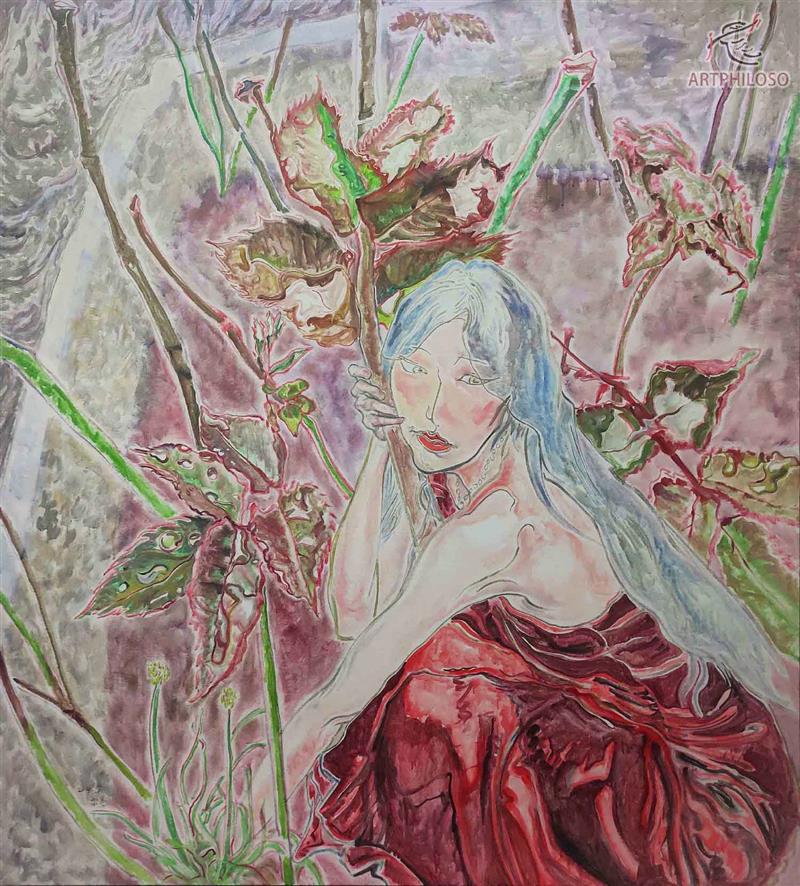
There are flowers from old memories above and new leaves and buds below.
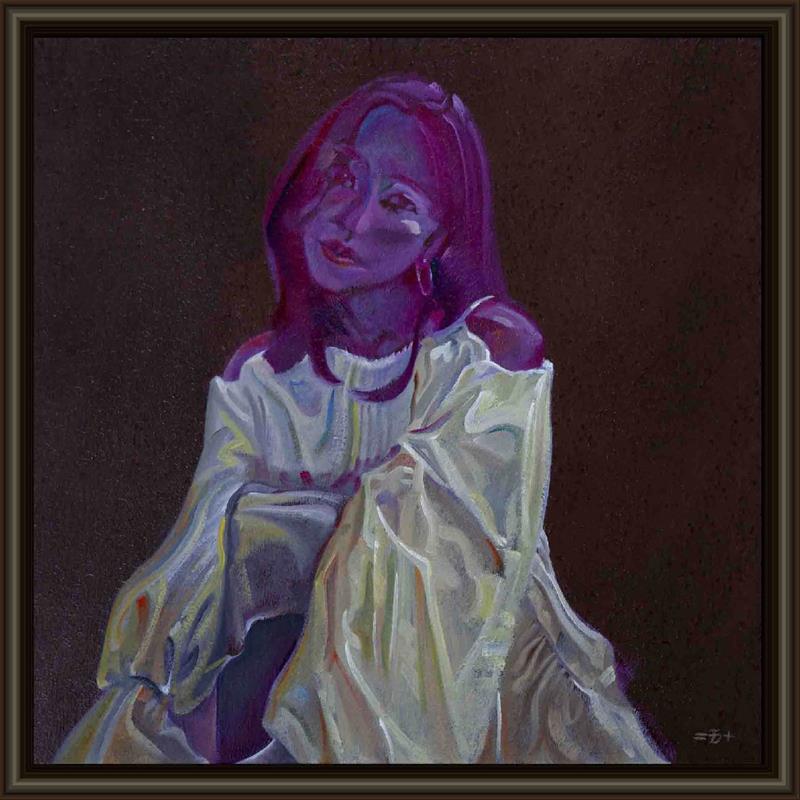
When defined as a "portrait," this painting quietly rebels—it captures no standard expression, offers no identity markers.
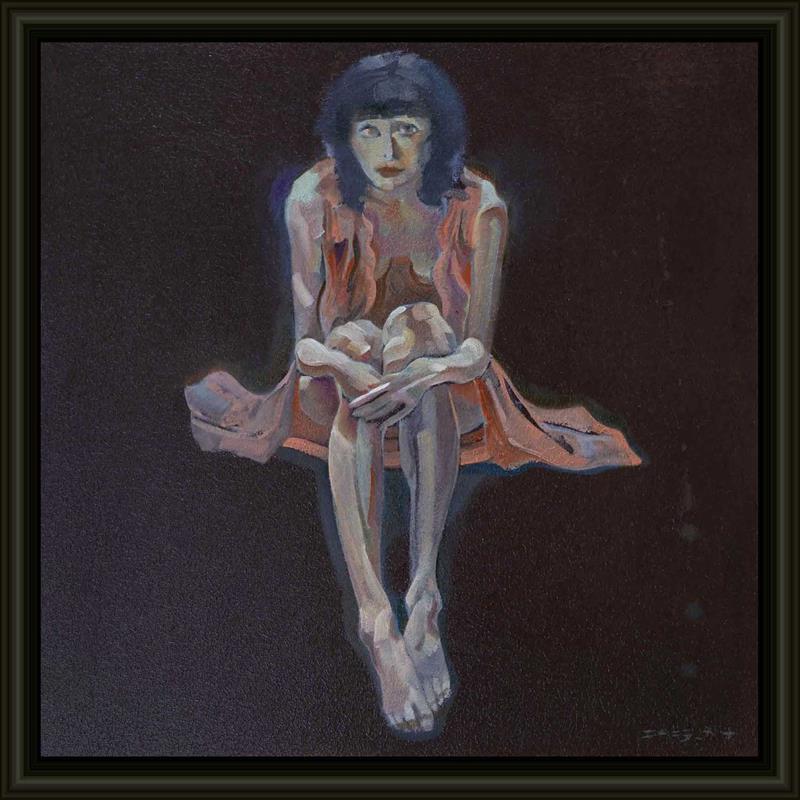
The painting presents a theatrical portrait of a solitary woman. The title End of the Blazing Sun 7 creates a cold–warm irony: while the name suggests the blazing climax of heat, the image wraps the figure in bluish-gray tones, resembling ashes after fire. The central theme becomes the idea of “clarity after exhaustion.”
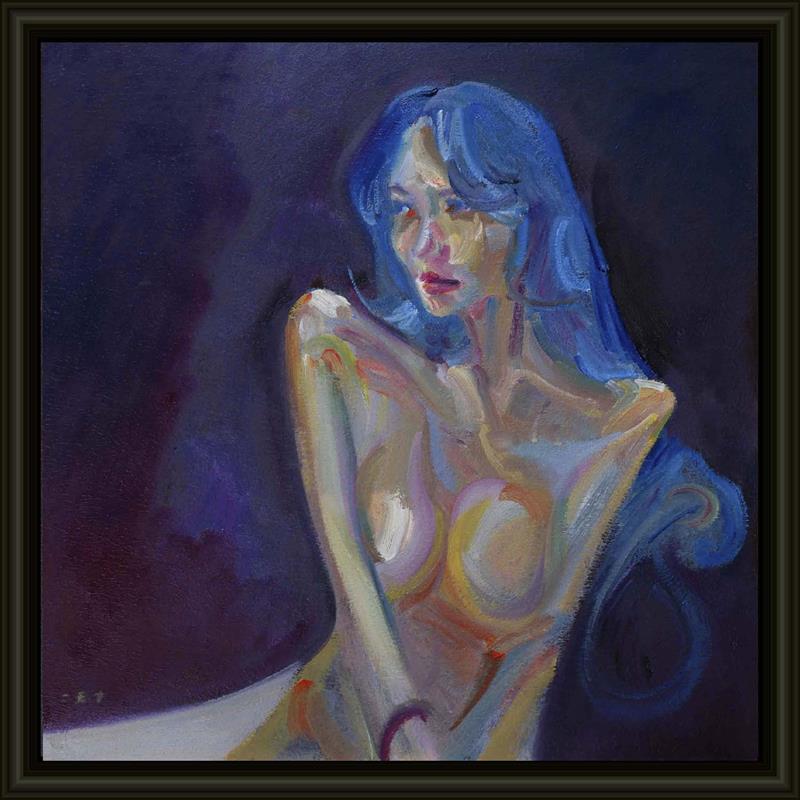
This is a half-length female nude, yet it avoids narrative realism and turns toward a self-portrait of mood and light. The title points to the “end of the blazing sun,” but the canvas is dominated by cool blues, forming a sense of “condensation after heat”—the body becomes a thermometer rather than a story vessel.
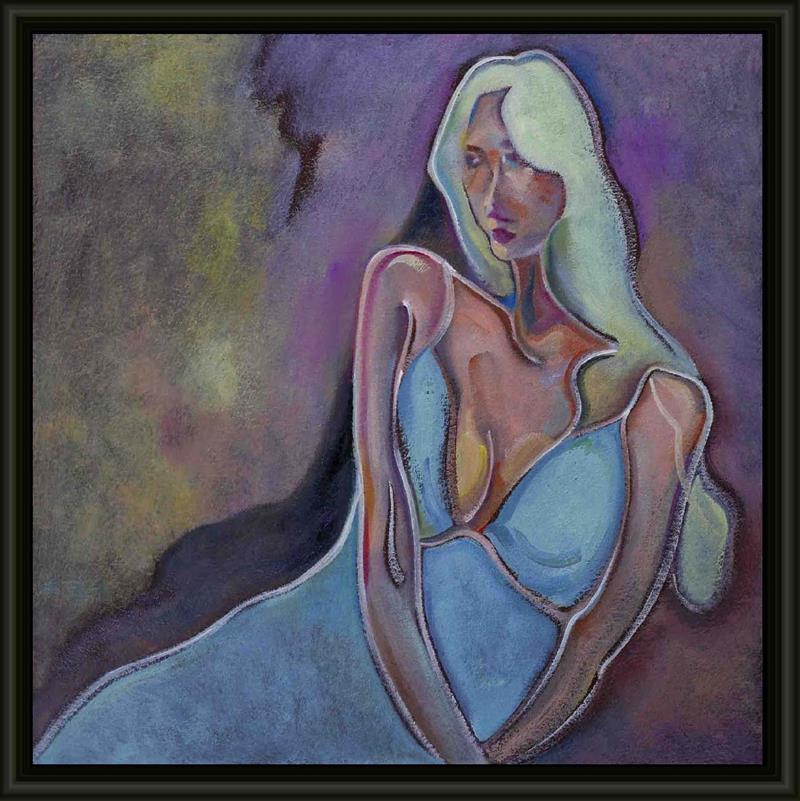
The lowered gaze and muted lips suggest a stance of both intimacy and withdrawal. The work resists erotic excess, instead presenting self-possessed sensuality after the heat has faded: warmth lingers on the surface, while the mind retreats into restraint and cool detachment.

A cat in the back mountain licked its hair amid the overlapping memories. It had no idea why humans were so slow.
like a fruit produced by aggregating the most exquisite ingredients in nature.
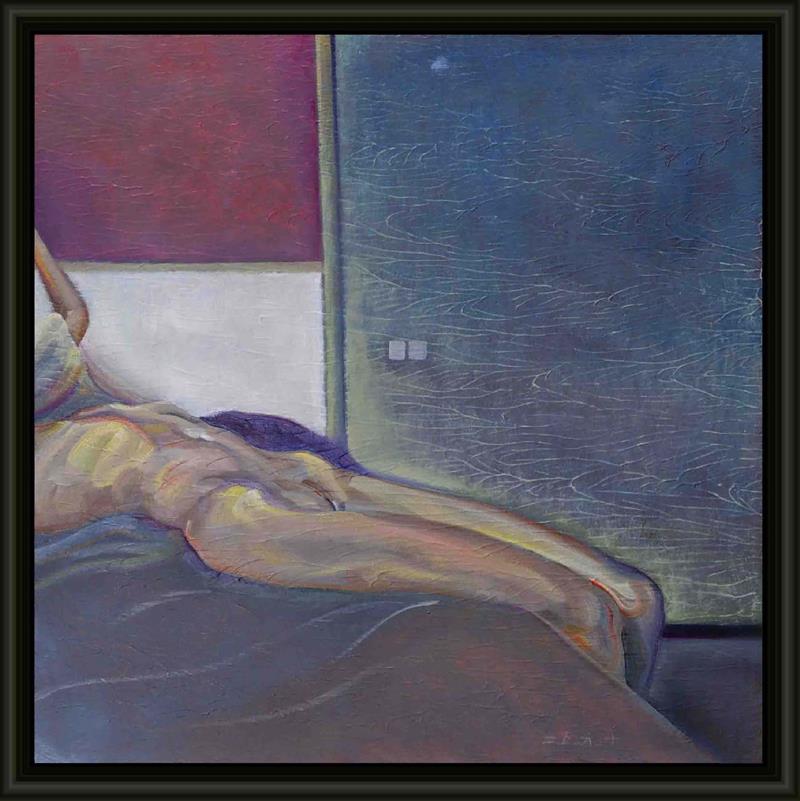
At the junction of bed and body, wet-on-wet dragging softens transitions. The thick impasto on the hips and knees forms tactile nodes. The rhythm of brushwork shifts from rigid to soft, marking the passage from object to flesh.
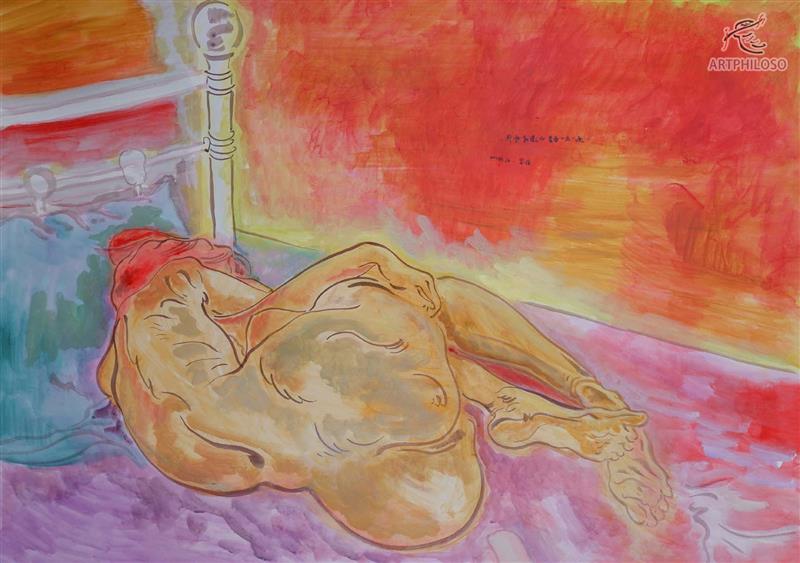
Before the soul comes and after the soul leaves, a body is no different from anything else in nature. If you no longer miss.

Mood and Tone: Isolated, restrained, yet charged with hidden tension. The viewer is drawn in by the red yet distanced by the facelessness, producing a psychological push-and-pull.
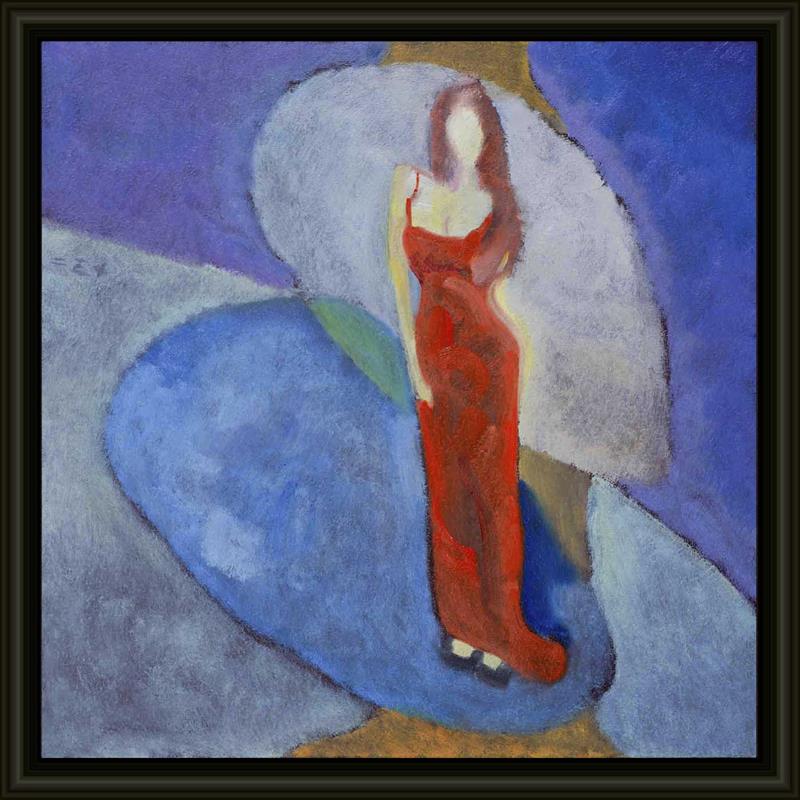
At its heart, the work suggests that the body becomes a receptor of light and perception. The blank face signals not absence but anonymity and universality. In this sense, the painting transforms the figure into a vessel of heightened emotion, where presence is expressed precisely through what is withheld.
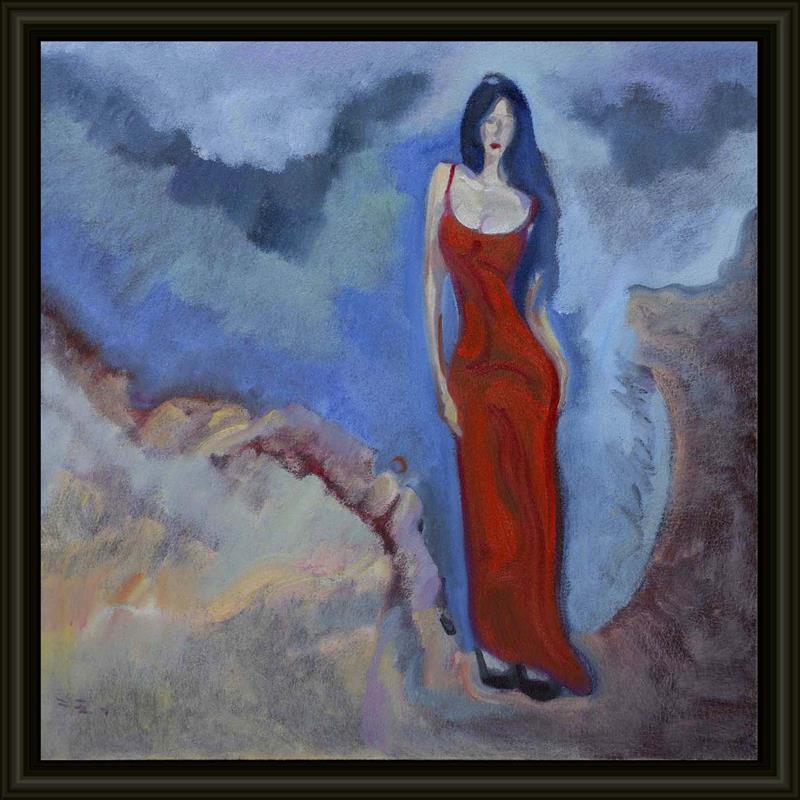
Mood and Rhythm: The painting balances serenity and desire. The cool, misty blues suggest calm detachment, while the red dress radiates intensity.
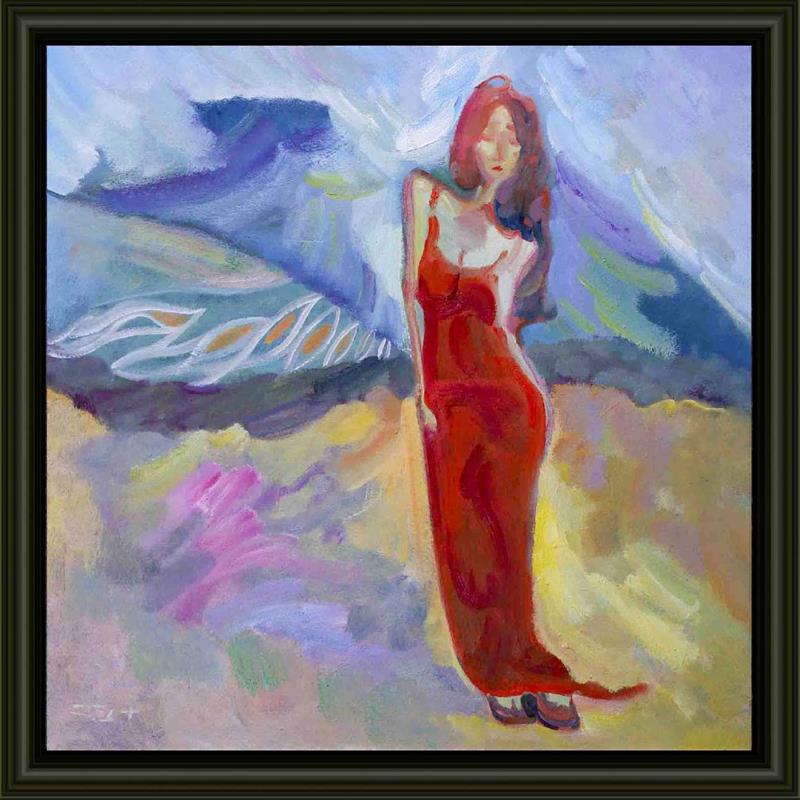
The work employs color and texture as its primary language of veiled perception.
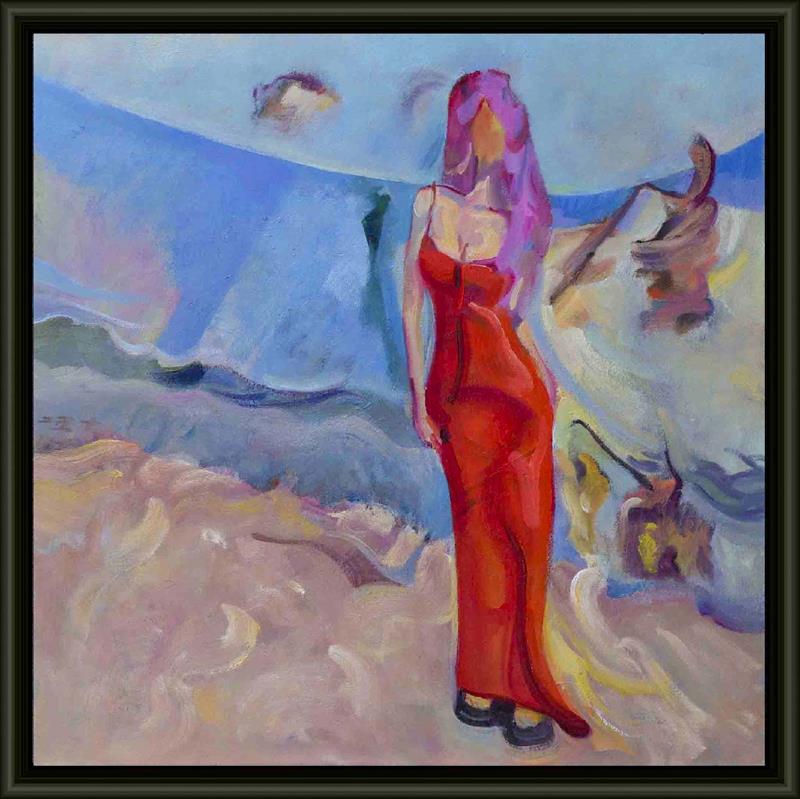
Mood and Tone: Bold, restless, and full of energy. The red dress is no longer isolated but the center of a color storm. The viewer feels not just detachment, but immersion and impact.
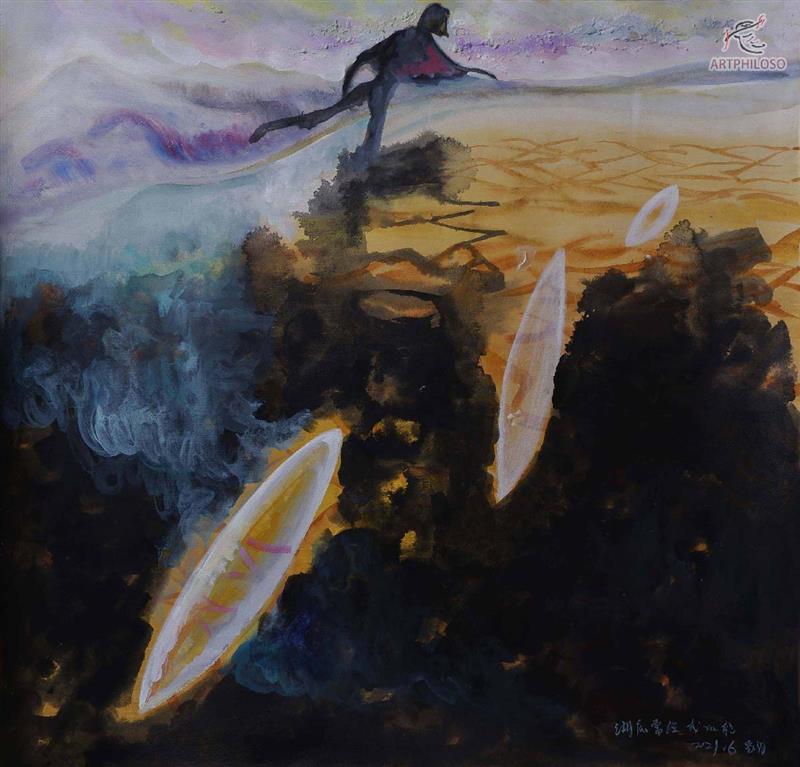
The boats sank to the bottom of the lake one after another, but they did not become history. It once carried the young person over one wave after another.
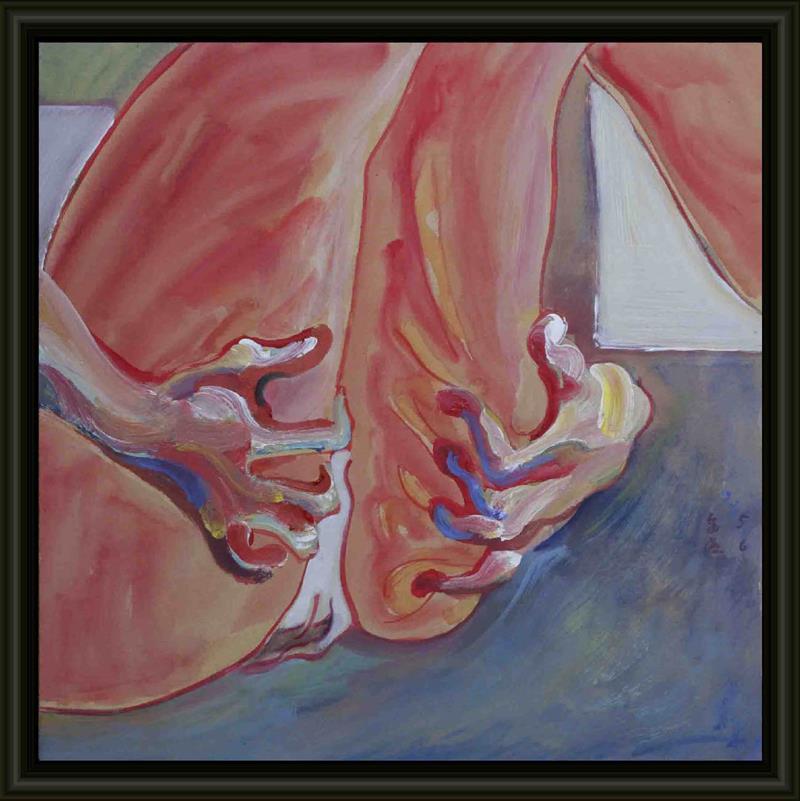
Large fields of coral and orange-red generate a temperature of flesh, while the fingertips flash with ultramarine, violet, and lemon yellow, mimicking the glisten of sweat and light.
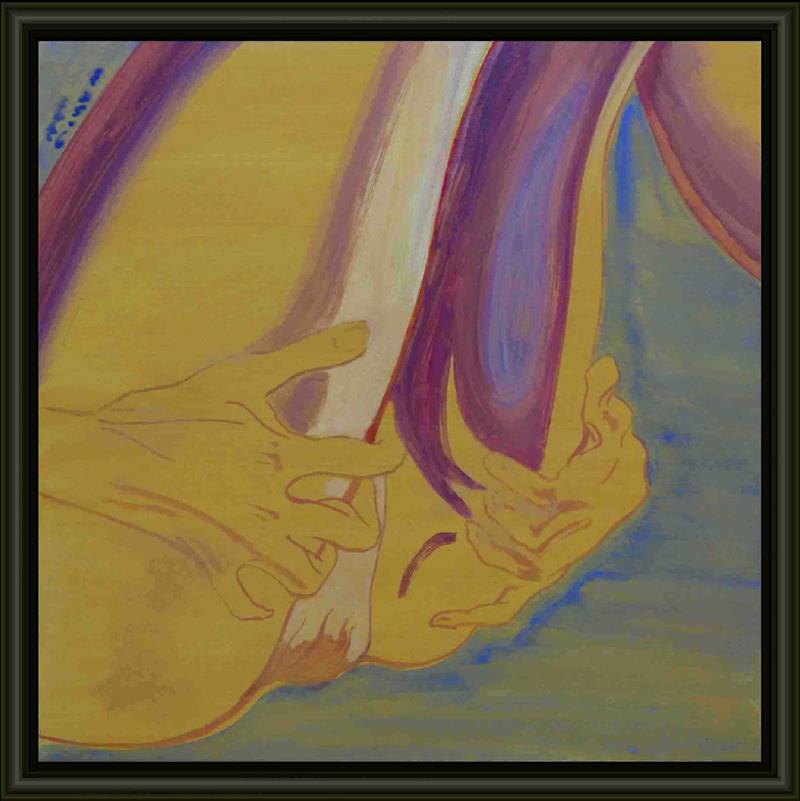
The work transforms “scratching” from a fleeting gesture into a sustained tactile duration, leading the viewer to drift between skin and nerve.

The painting presents a female half-length portrait, elongated and slightly exaggerated. Its central theme lies in the juxtaposition of “inner restlessness and outward elegance.”
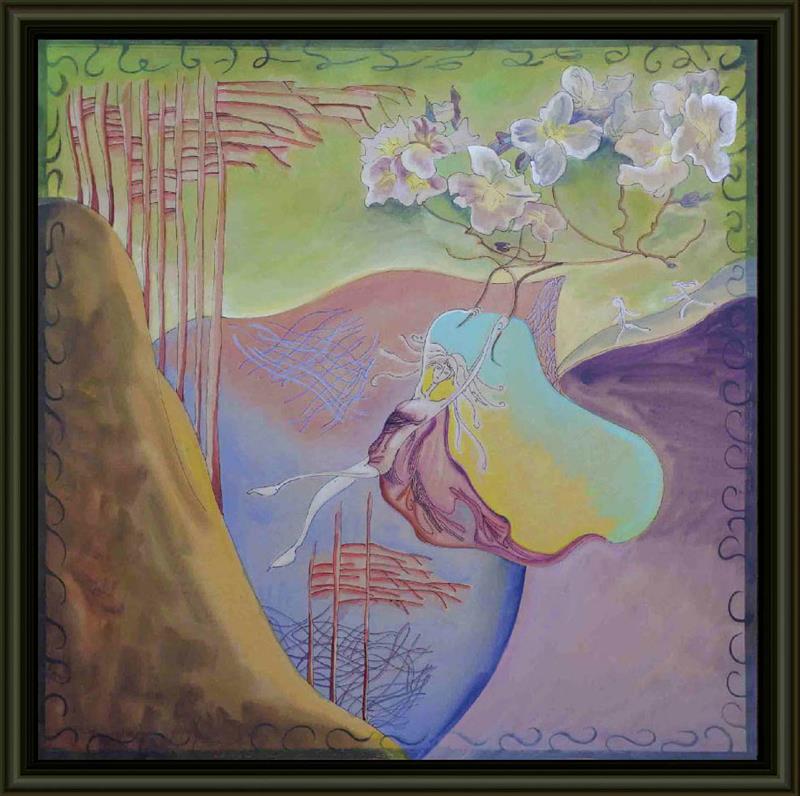
Here, line is less about contour than about rhythm.
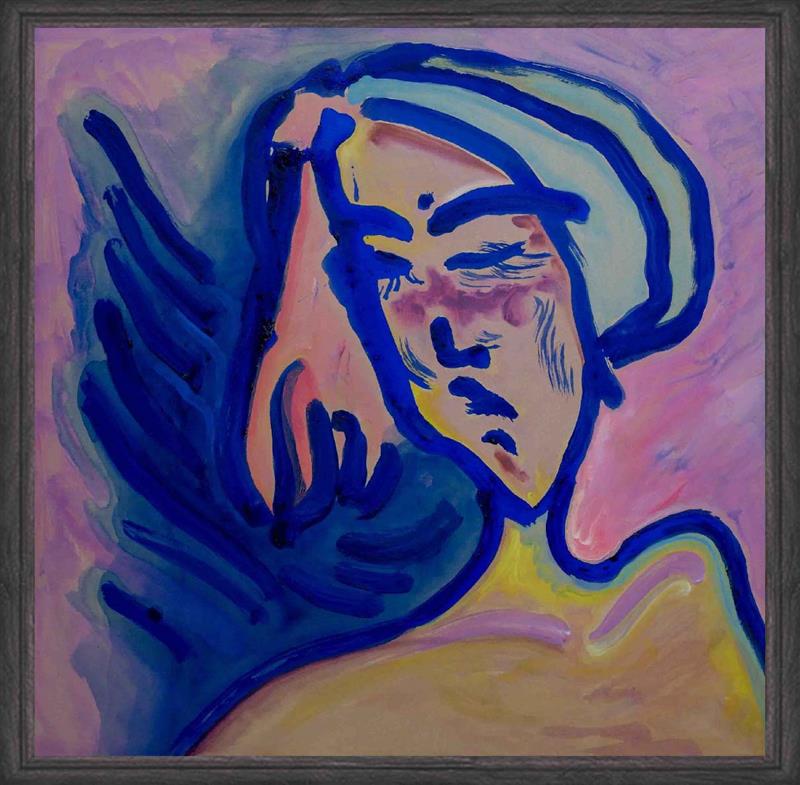
The overall mood is one of gentle unease—a blend of quiet introspection and veiled anxiety.

The face is the language of flowers.
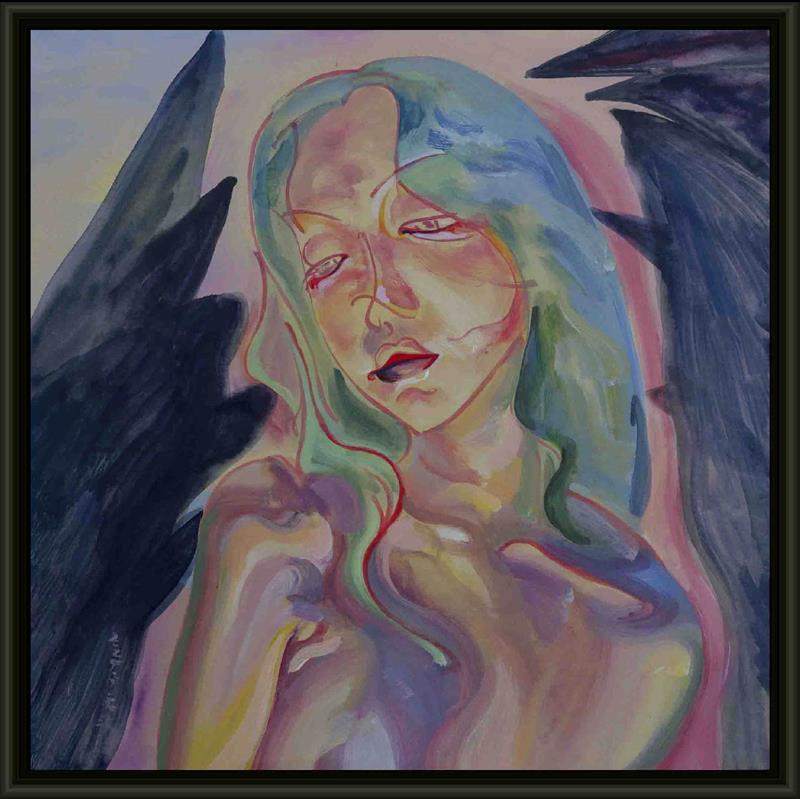
The work communicates a fragile balance of tenderness and unease. The viewer is invited into a private emotional space yet remains aware of the guarded boundaries.
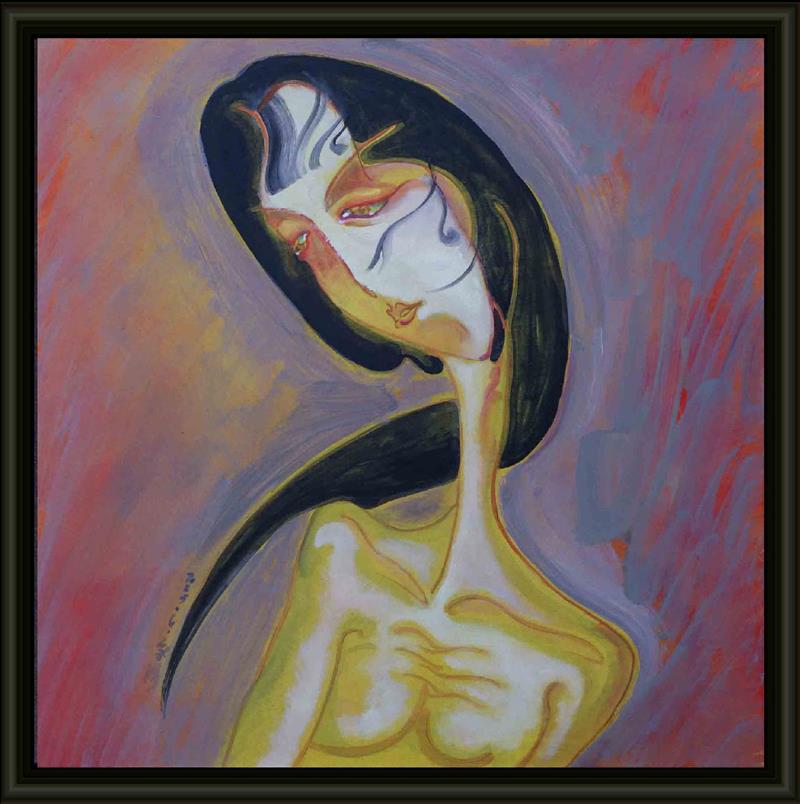
The painting constantly shifts between exposure and disguise. The mask-like white patterns evoke stage makeup, while the anatomical rib lines gesture toward raw corporeality.

The painting embodies a subtle conflict between desire and restraint, expression and silence.
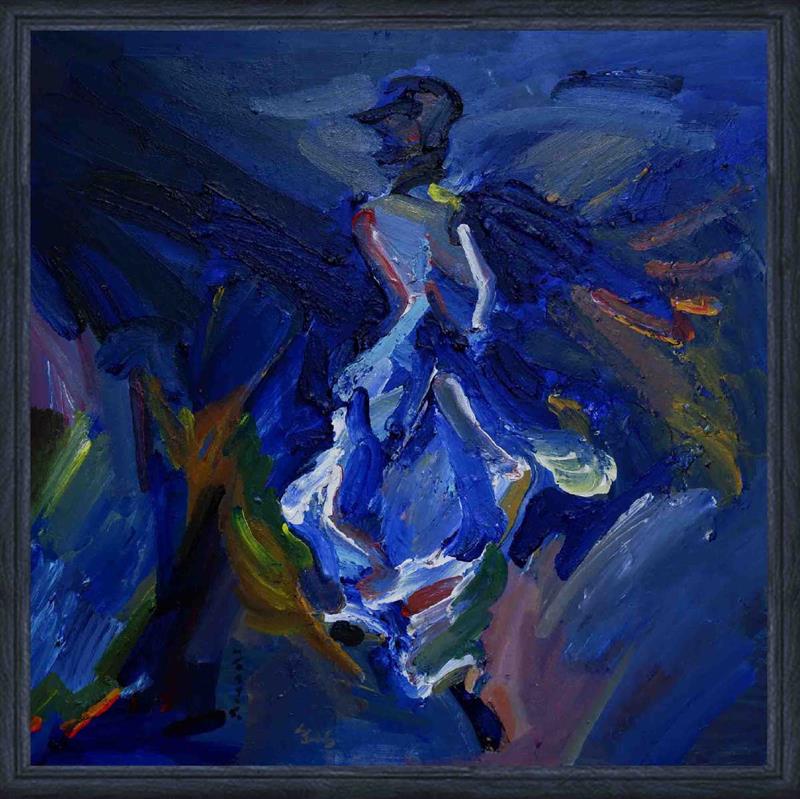
Paint becomes emotion made physical
